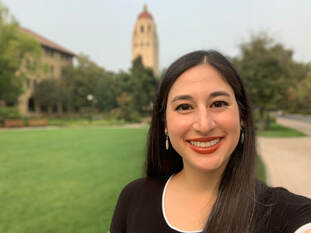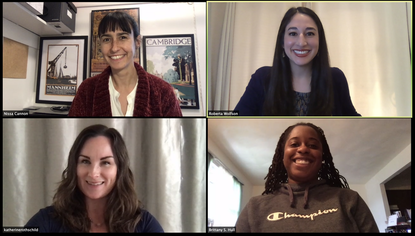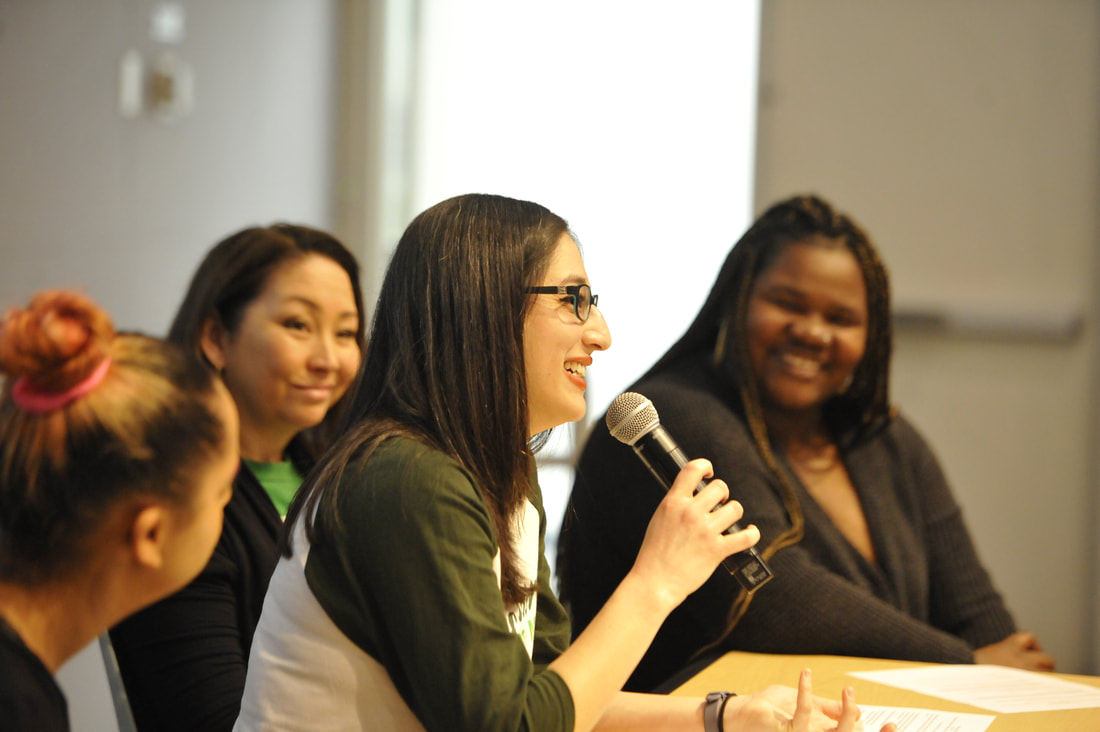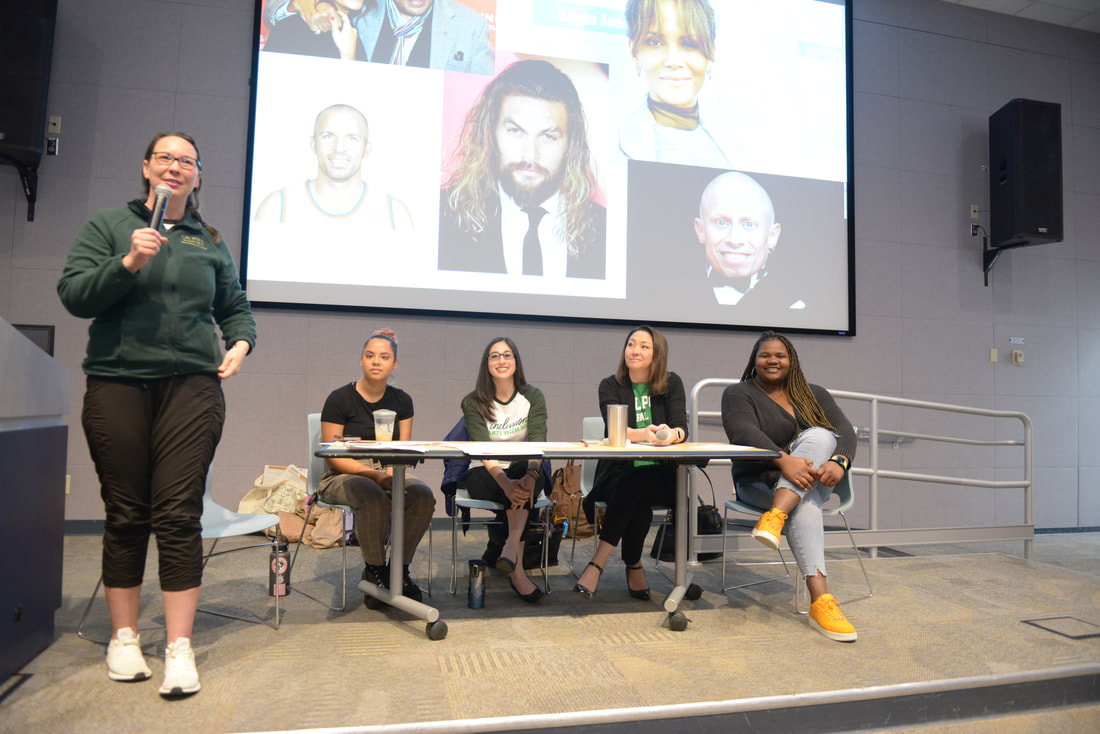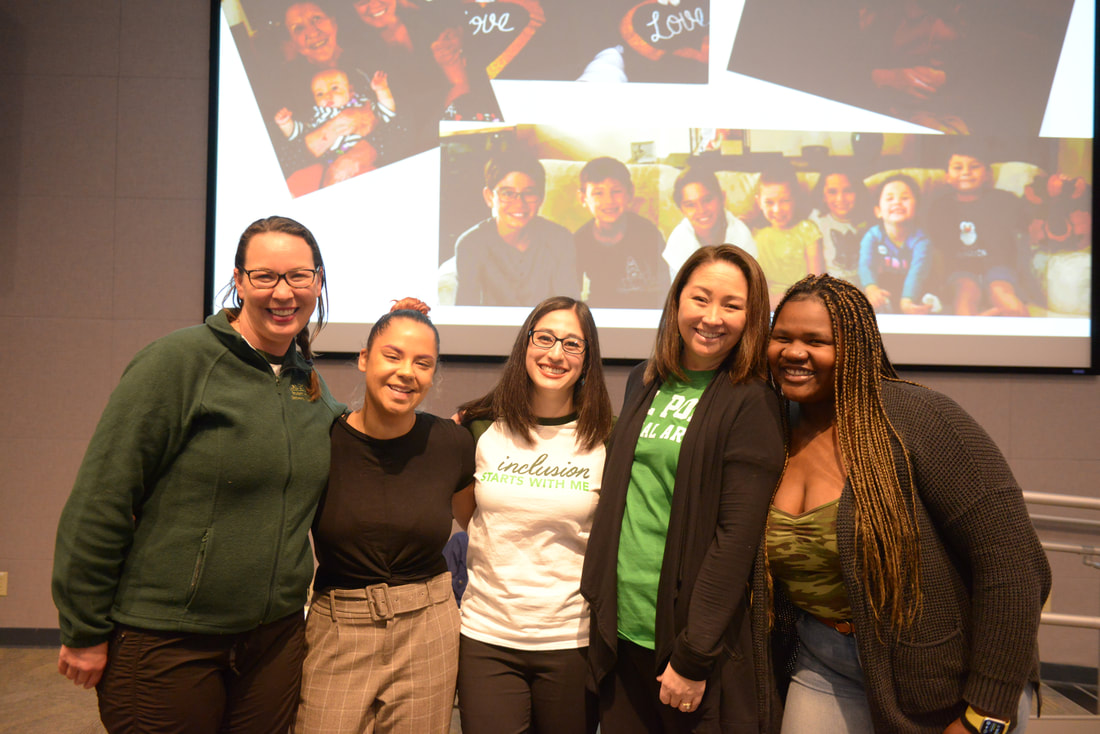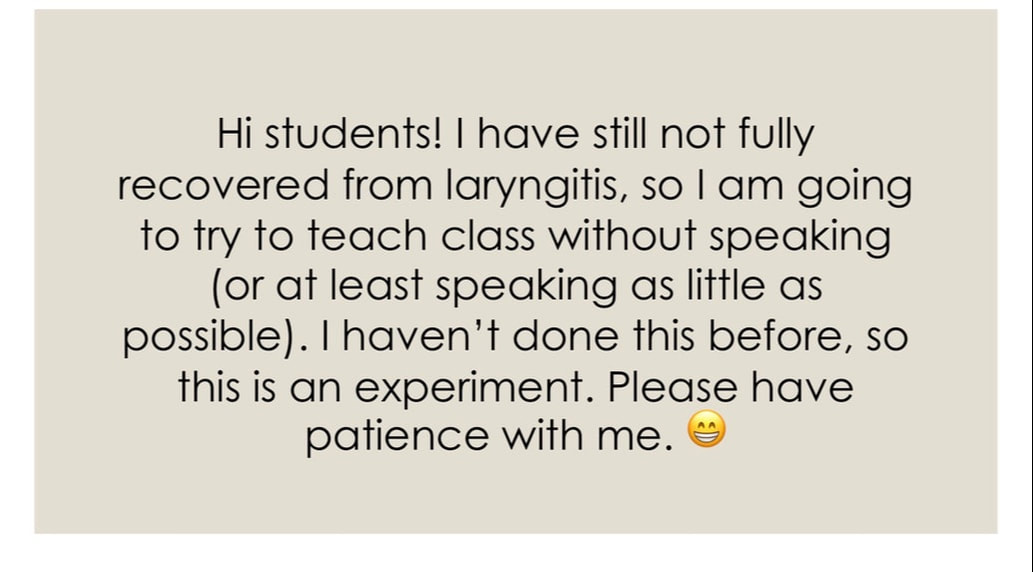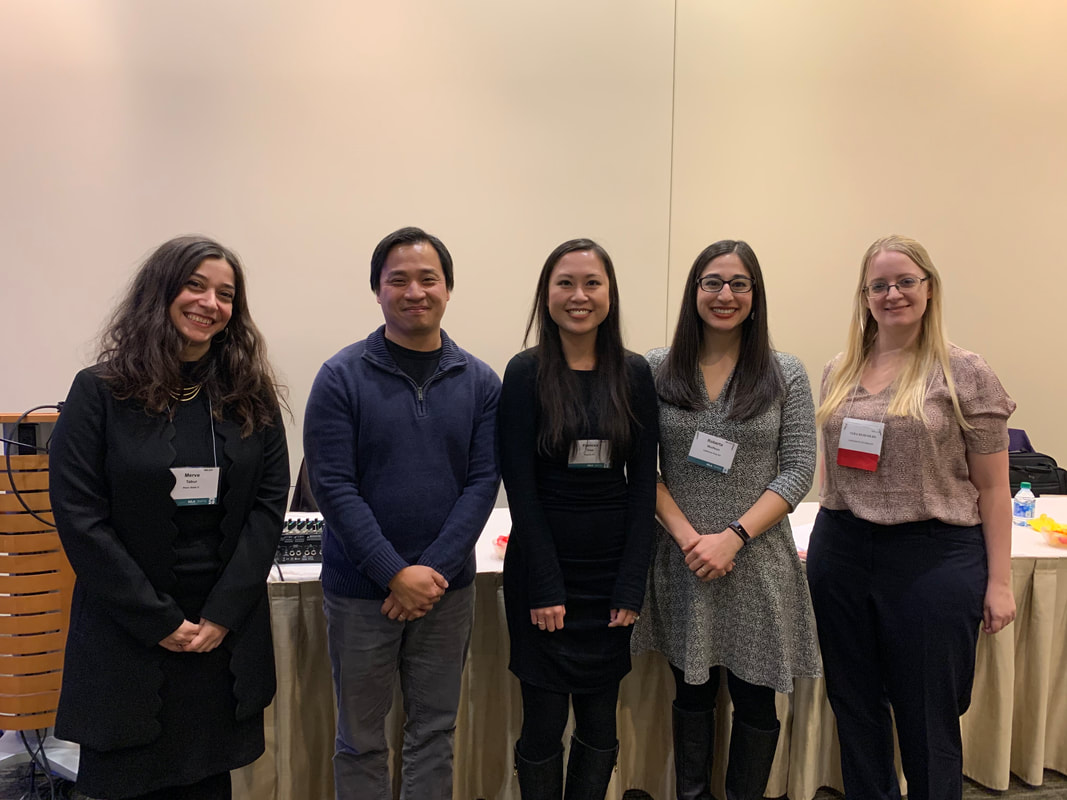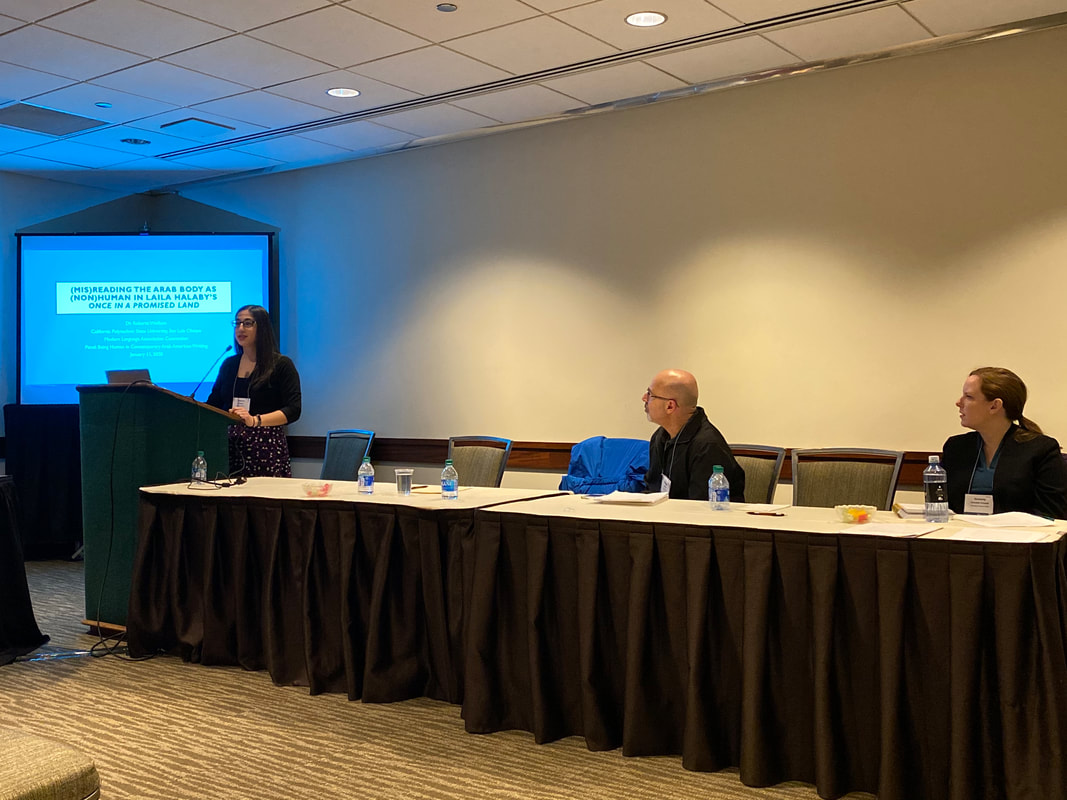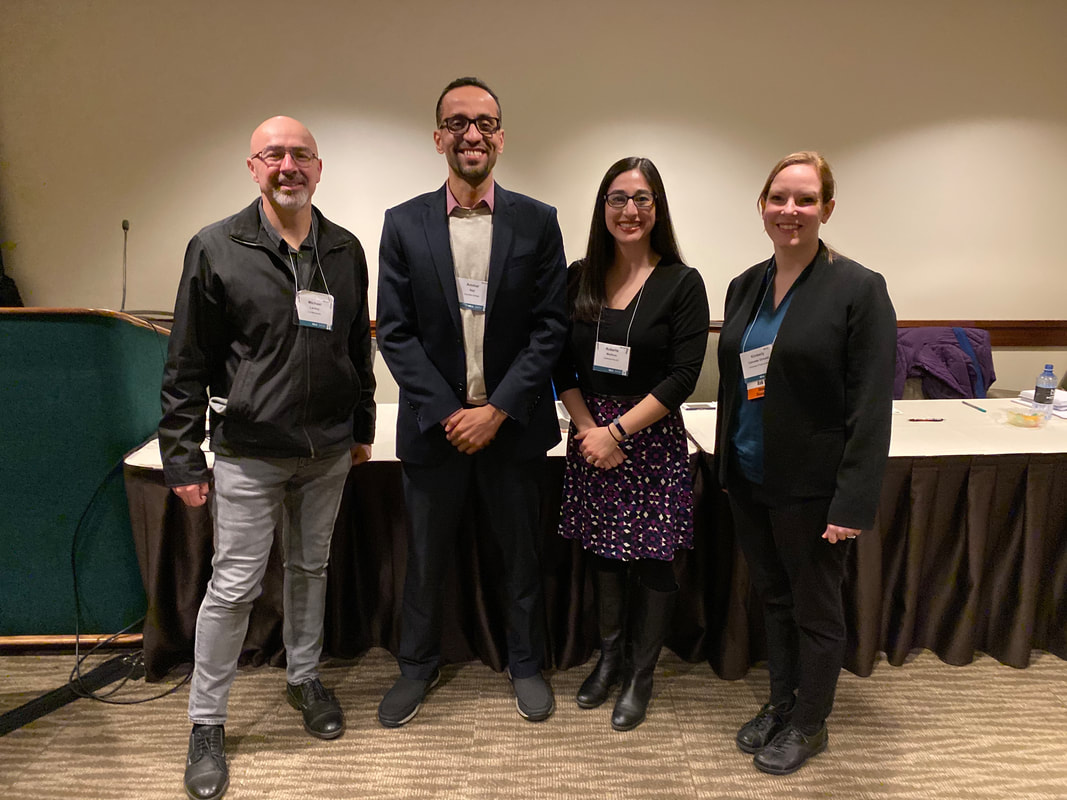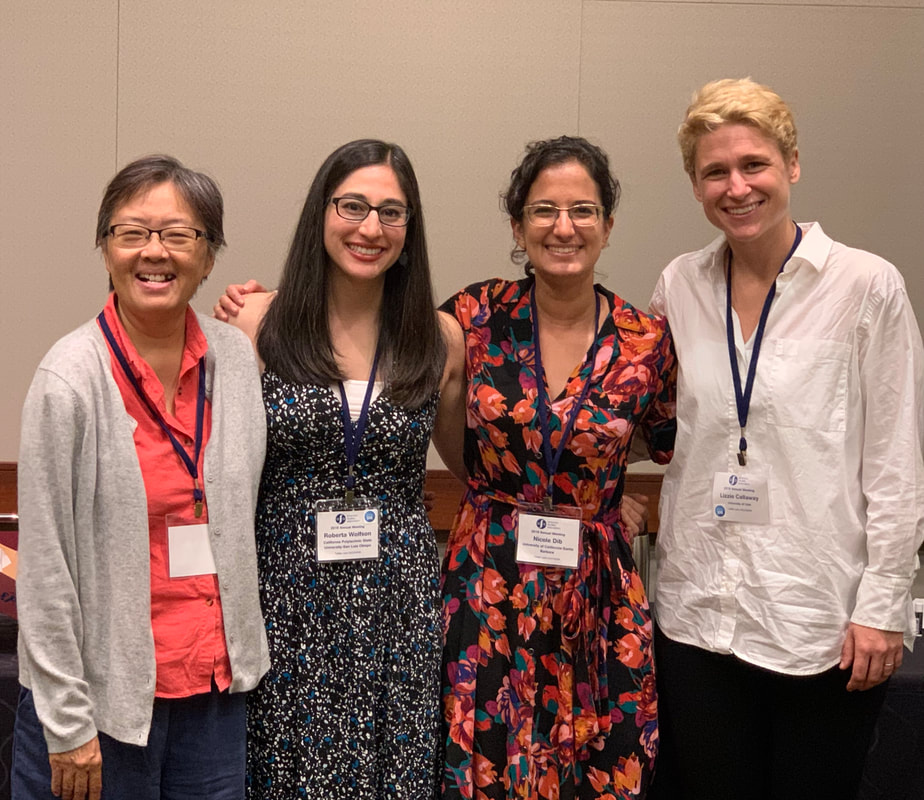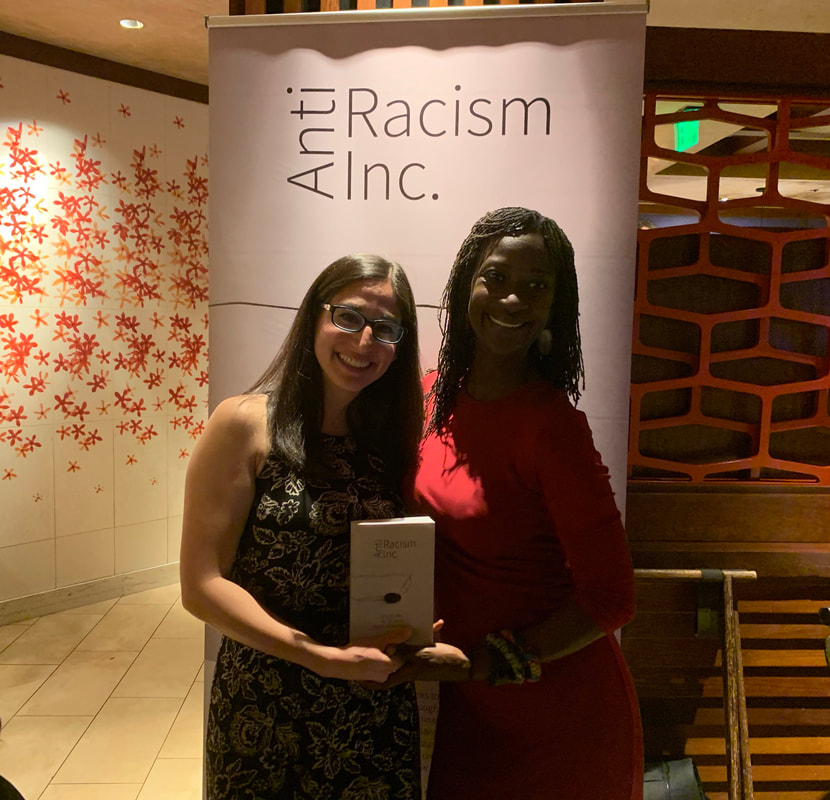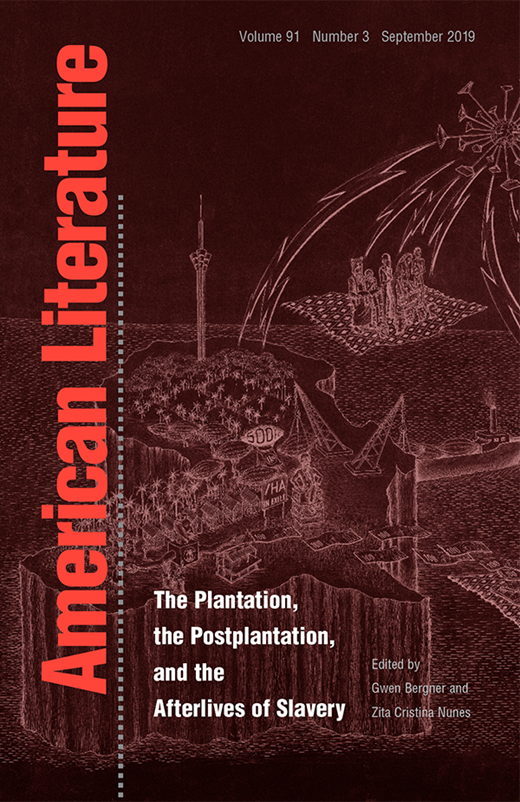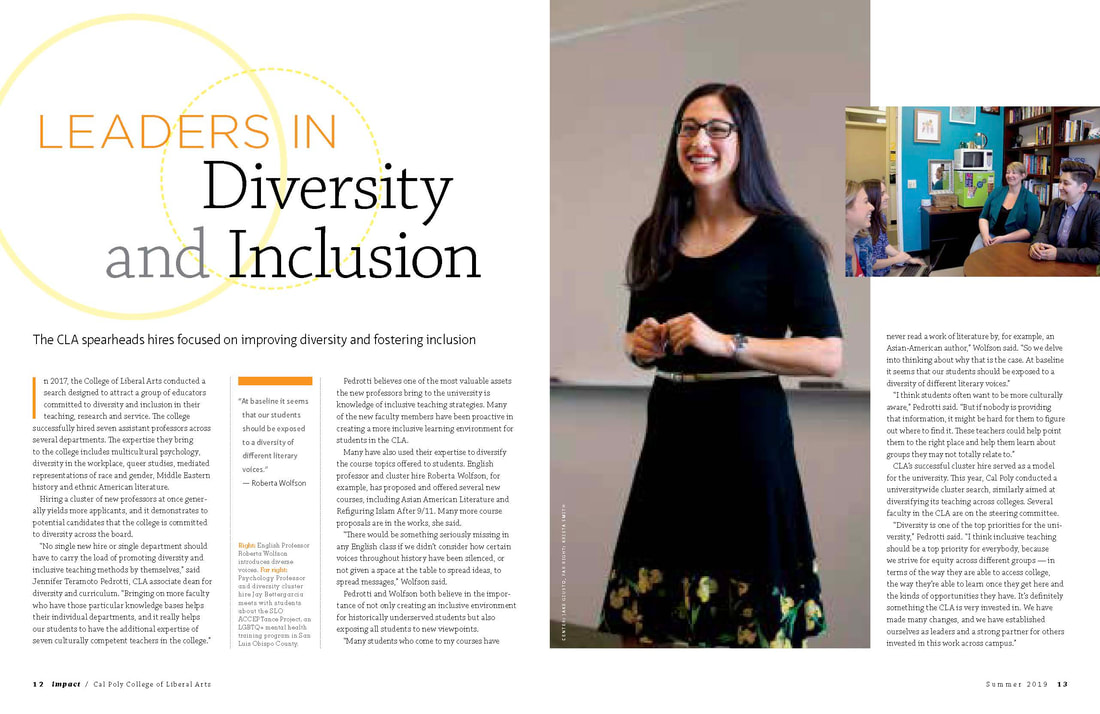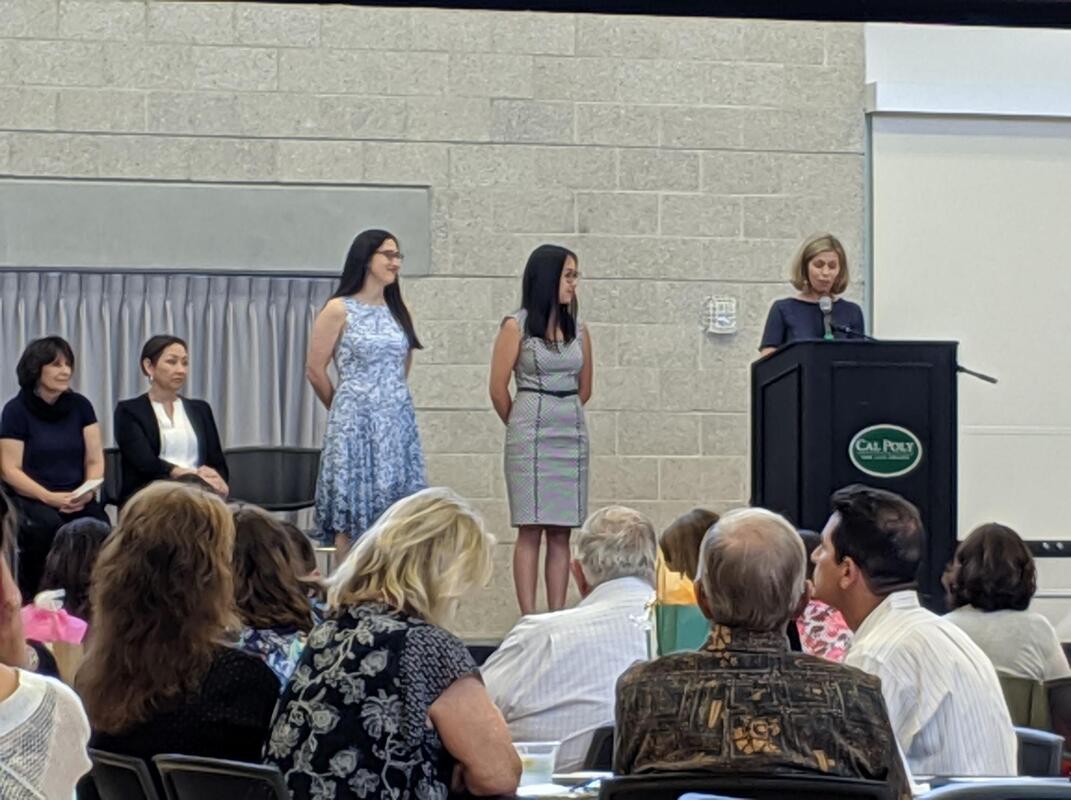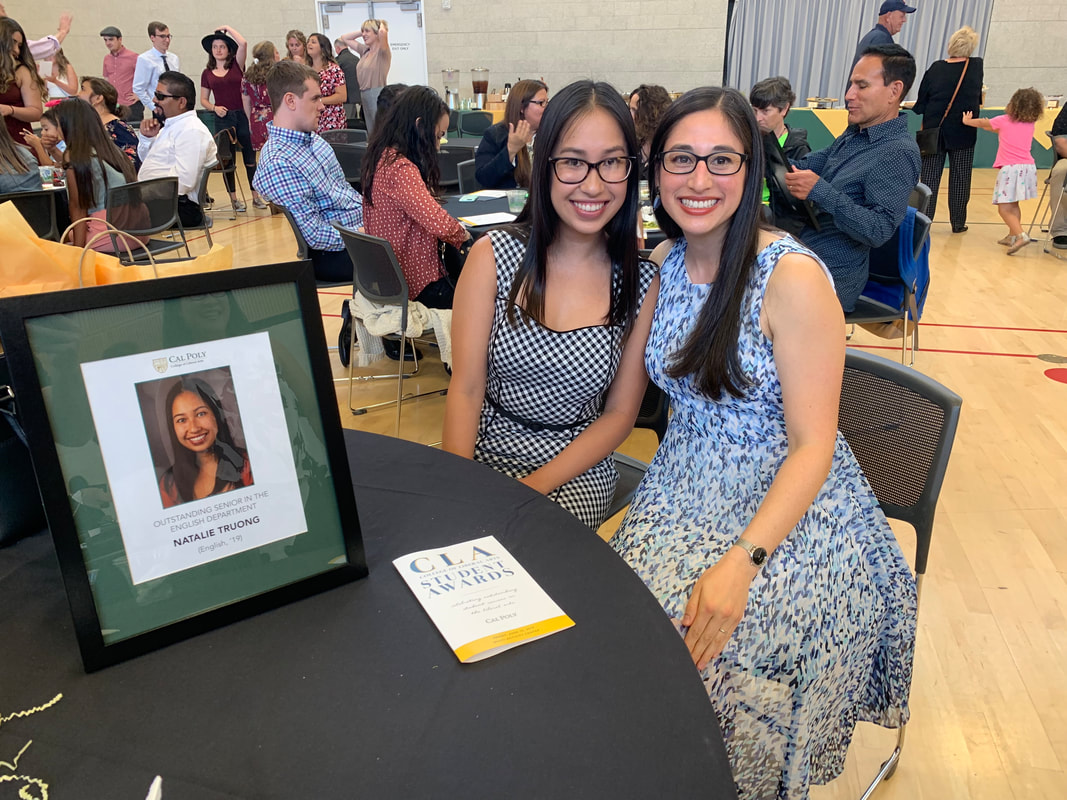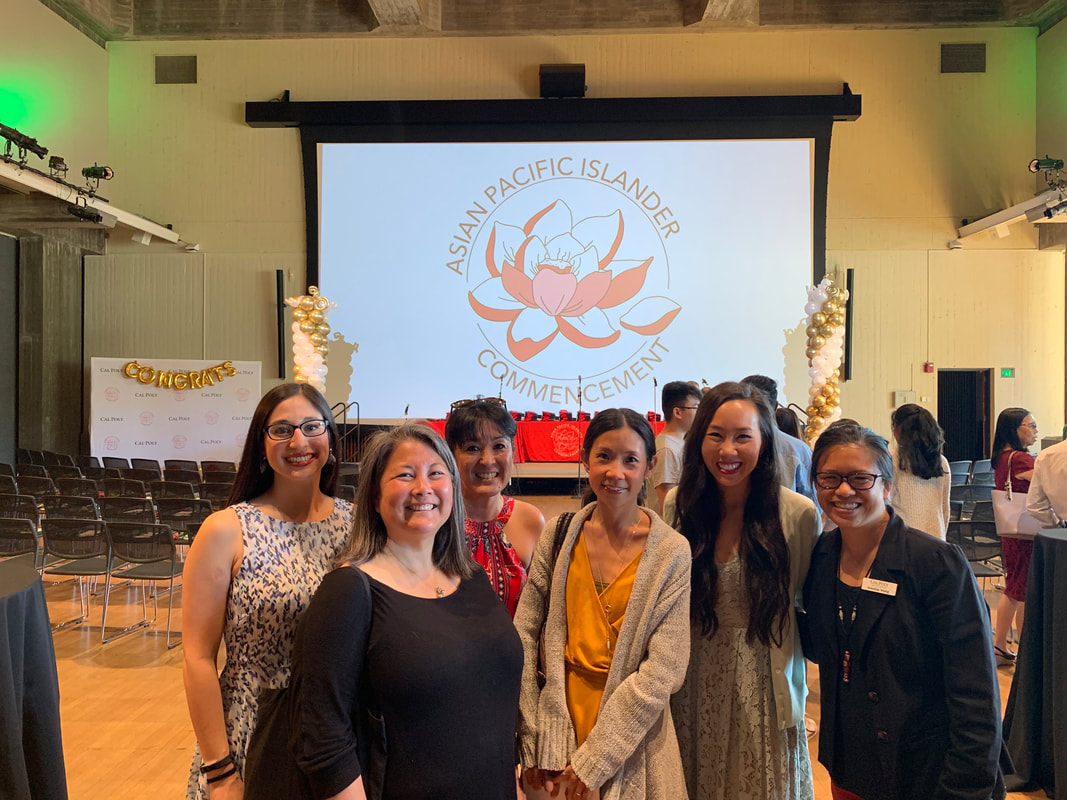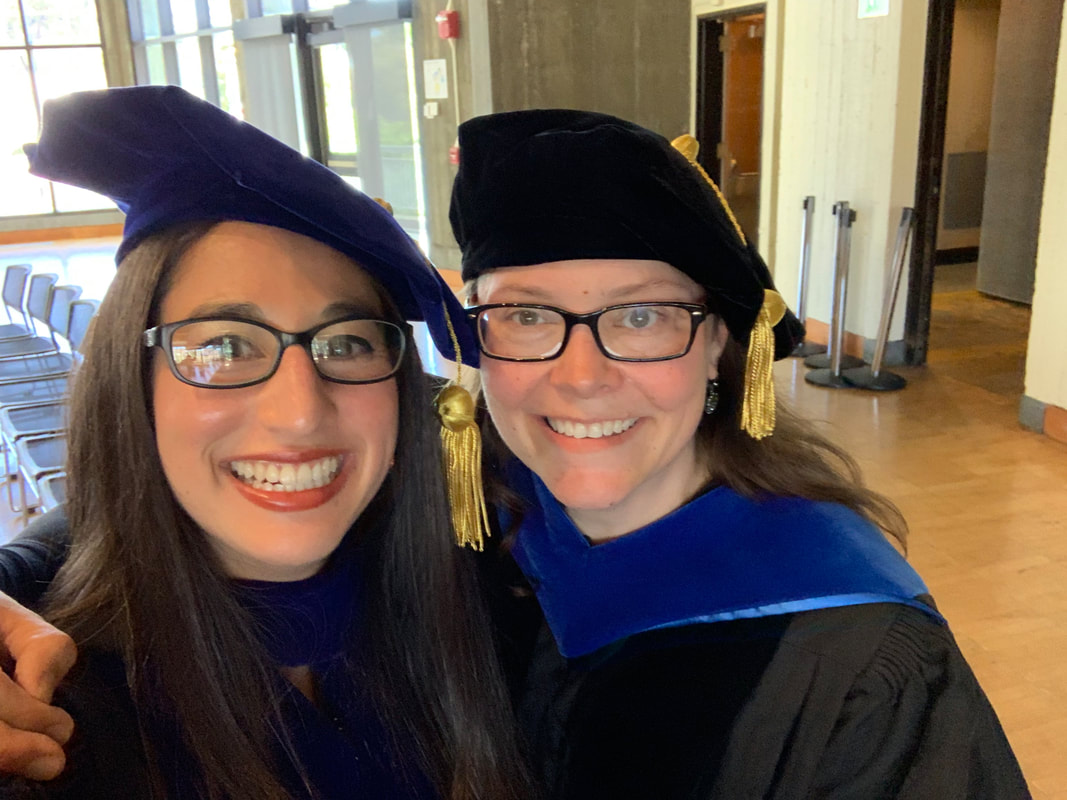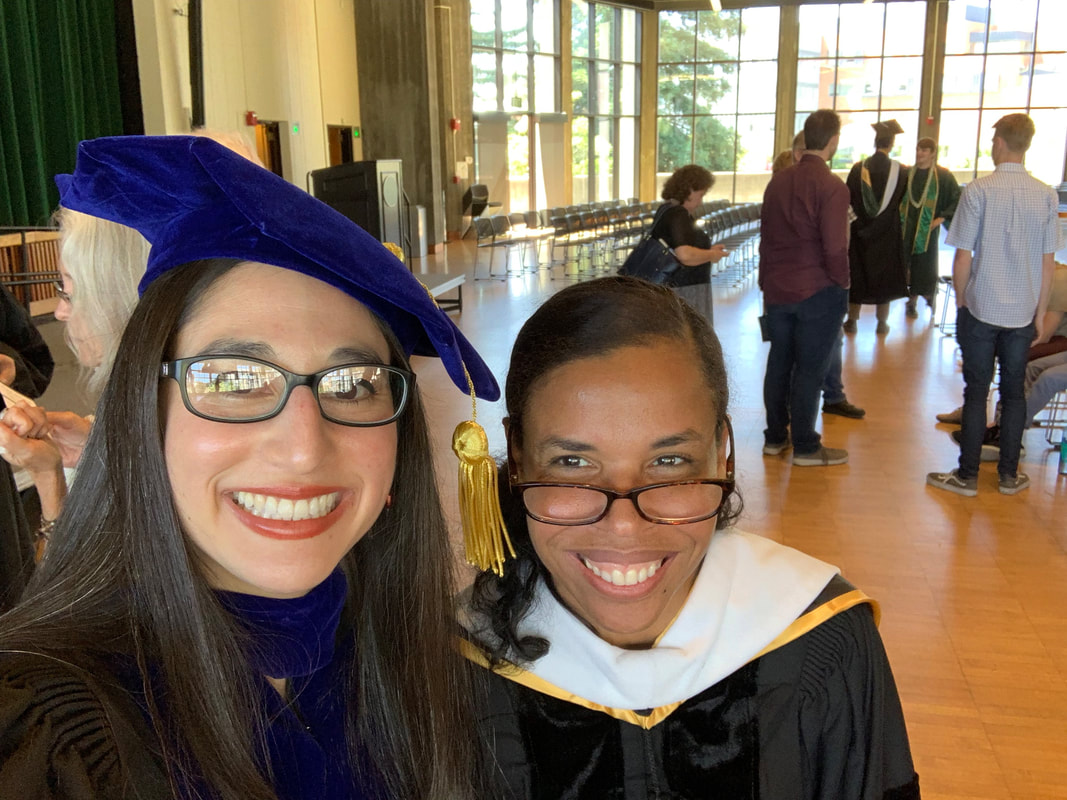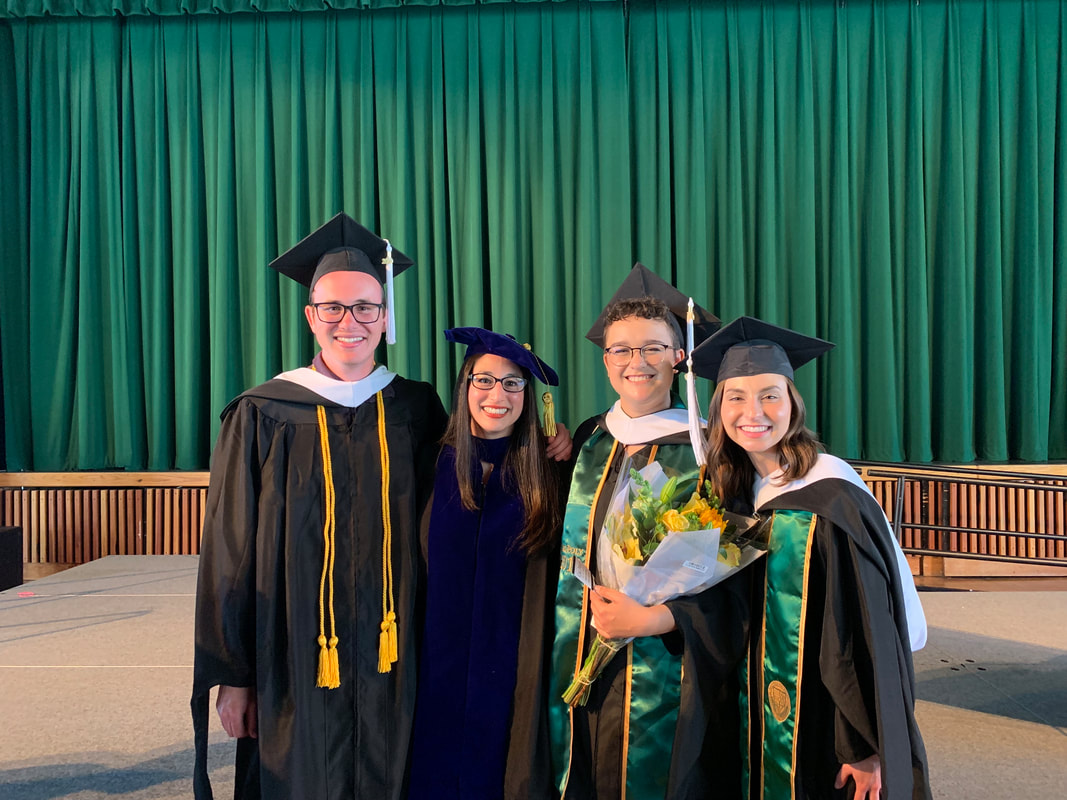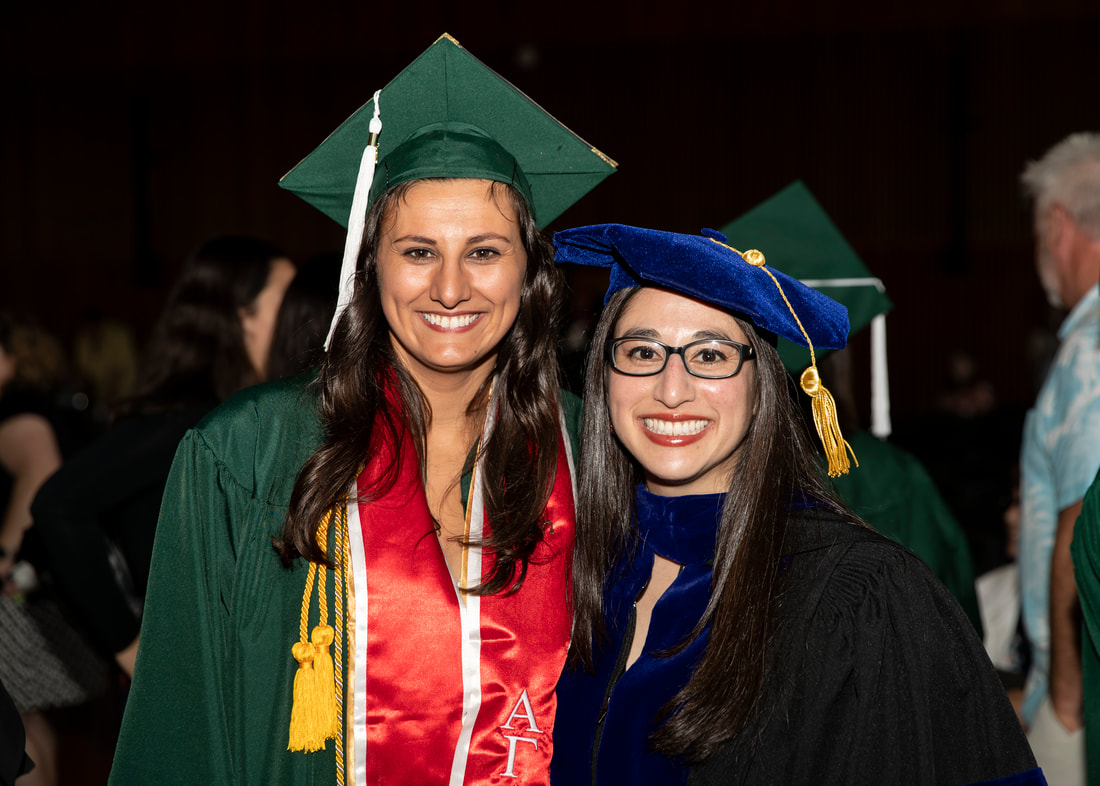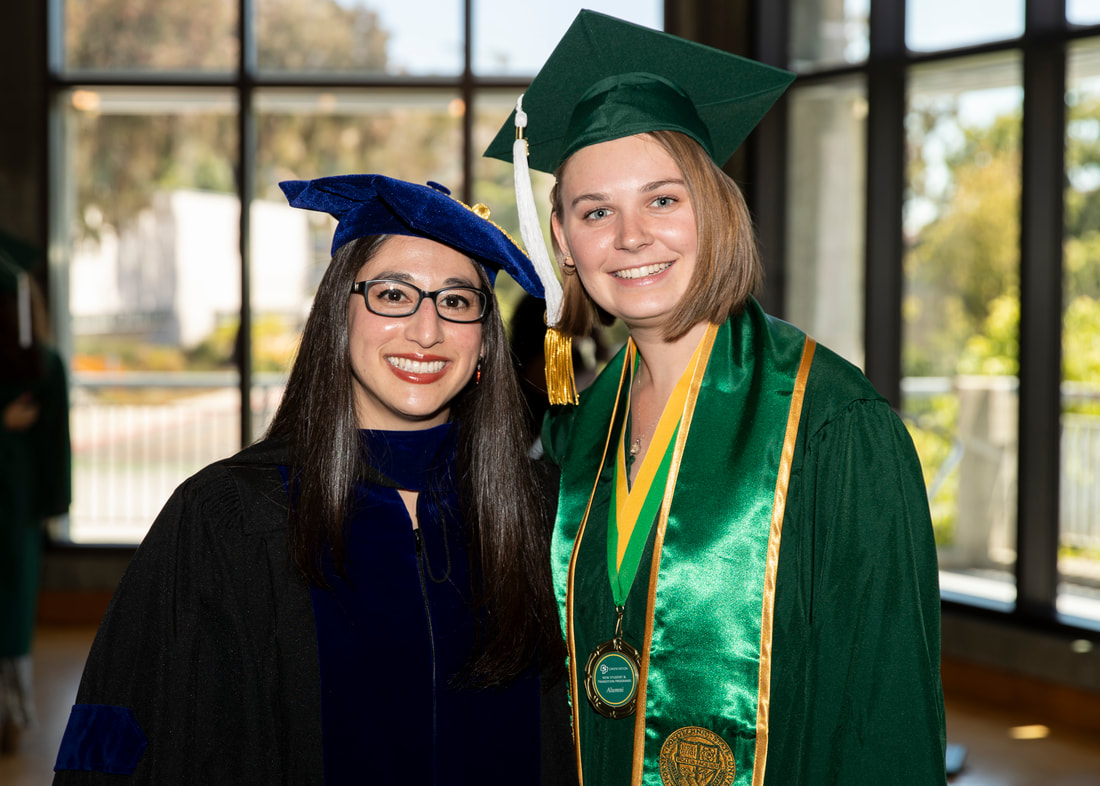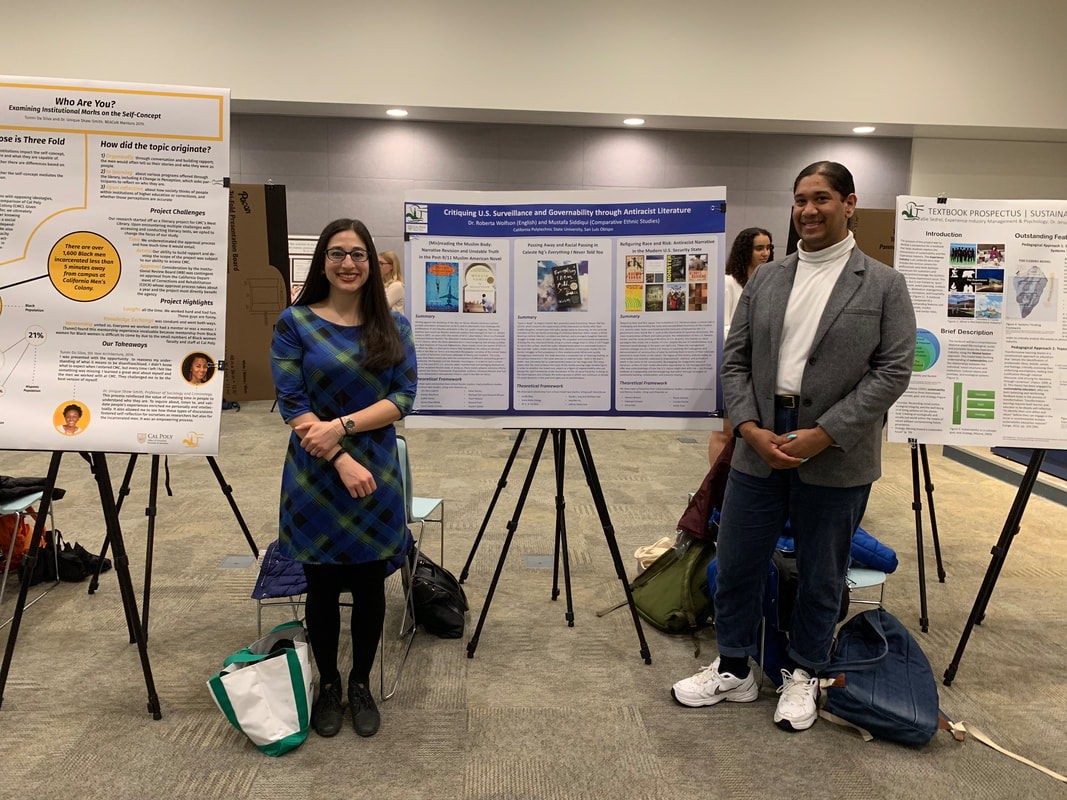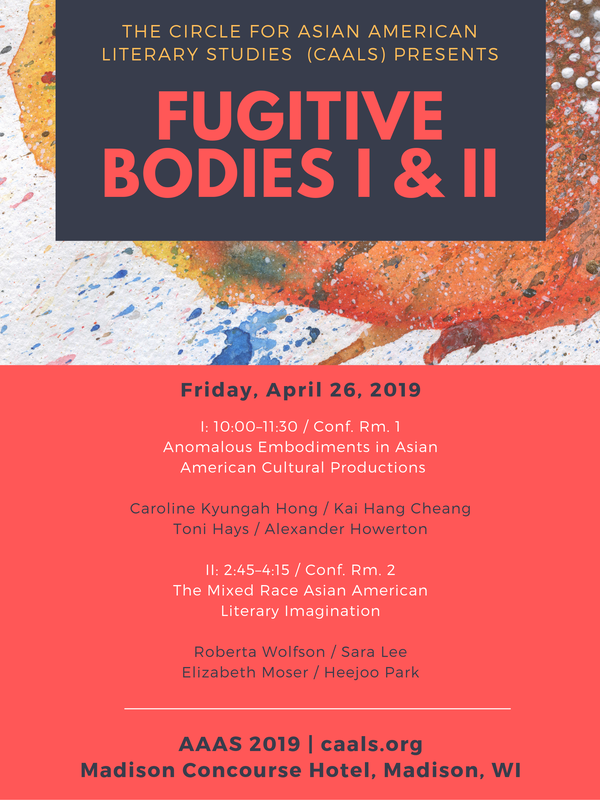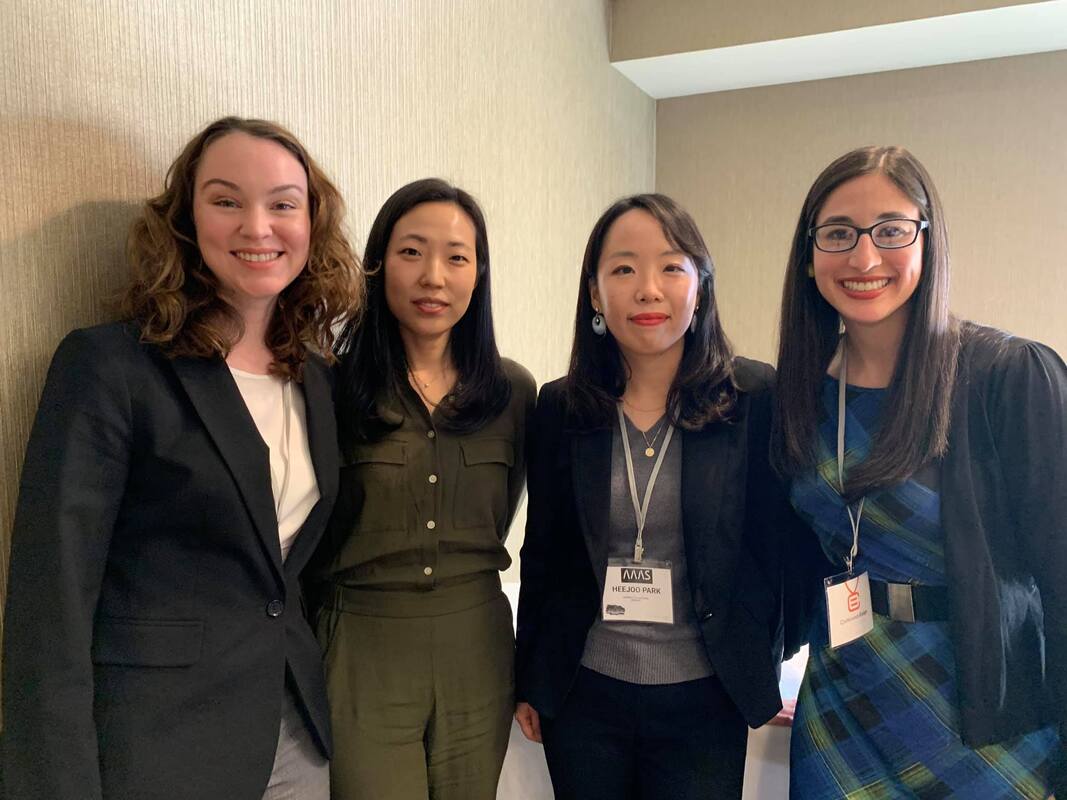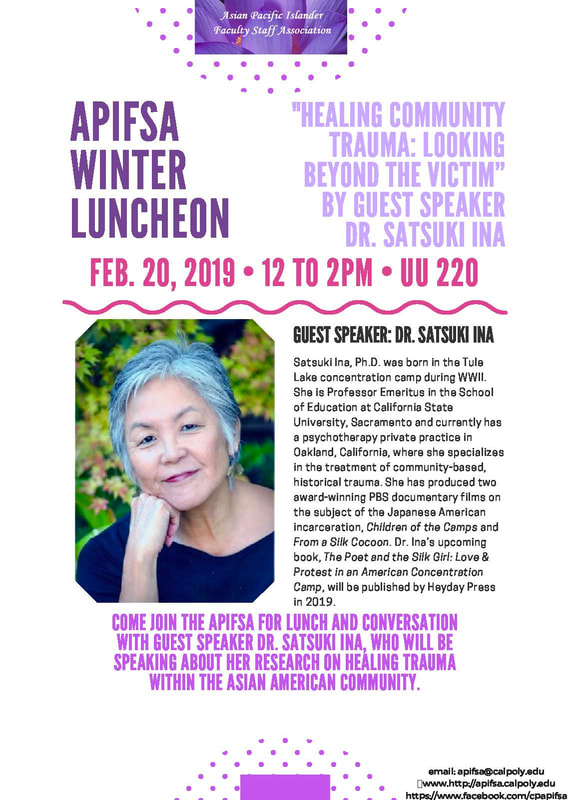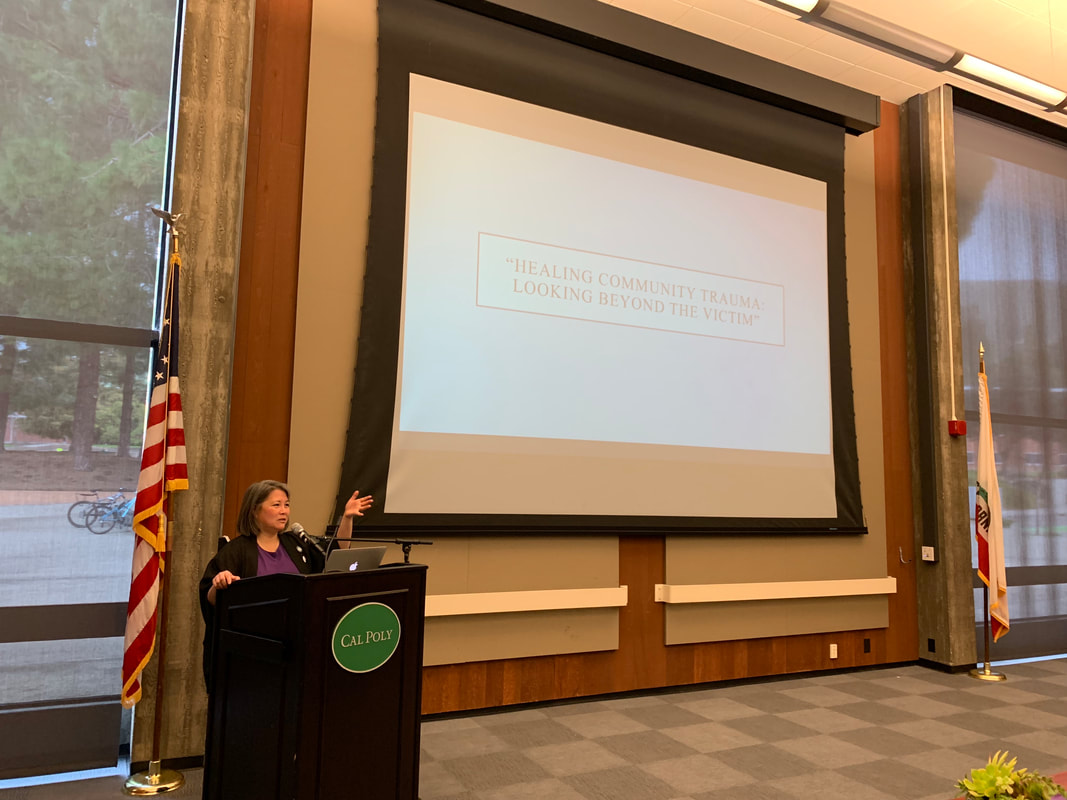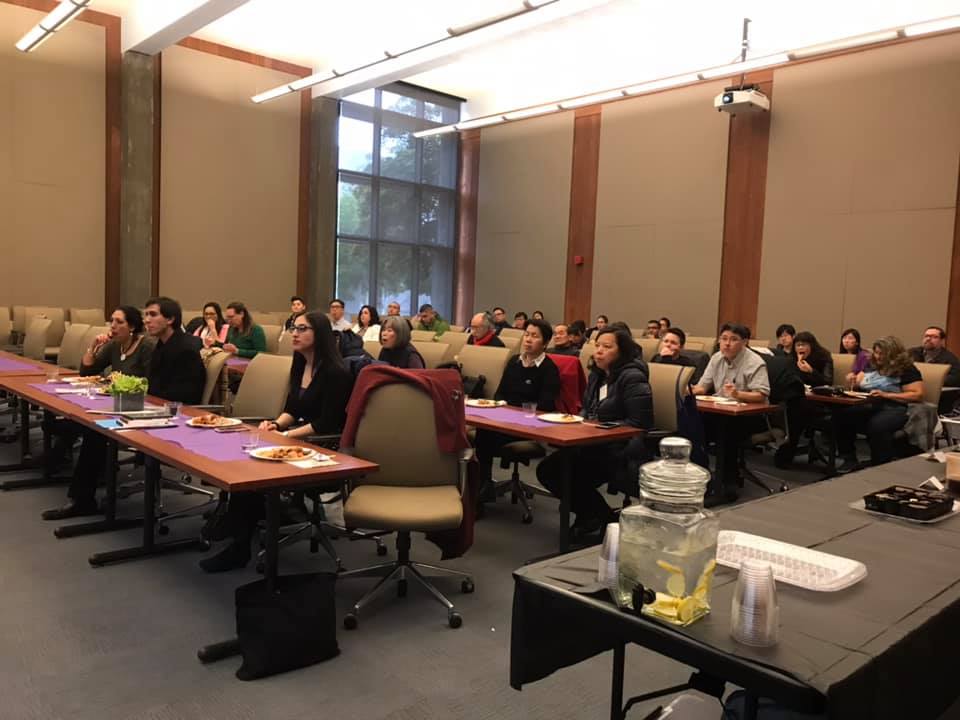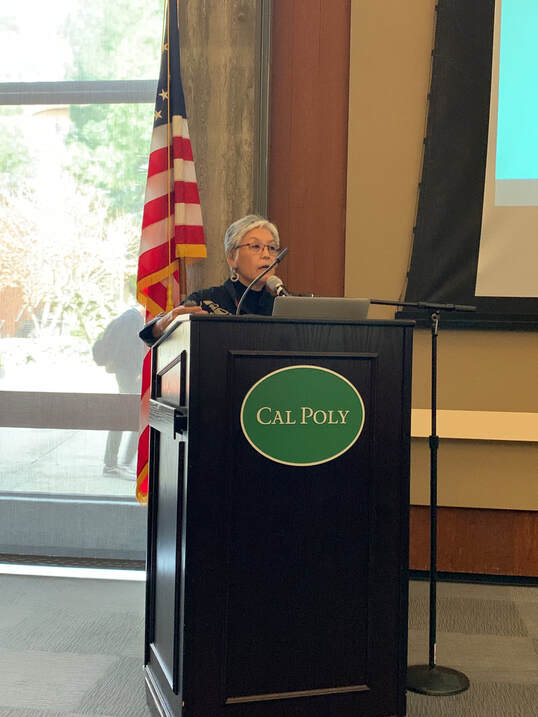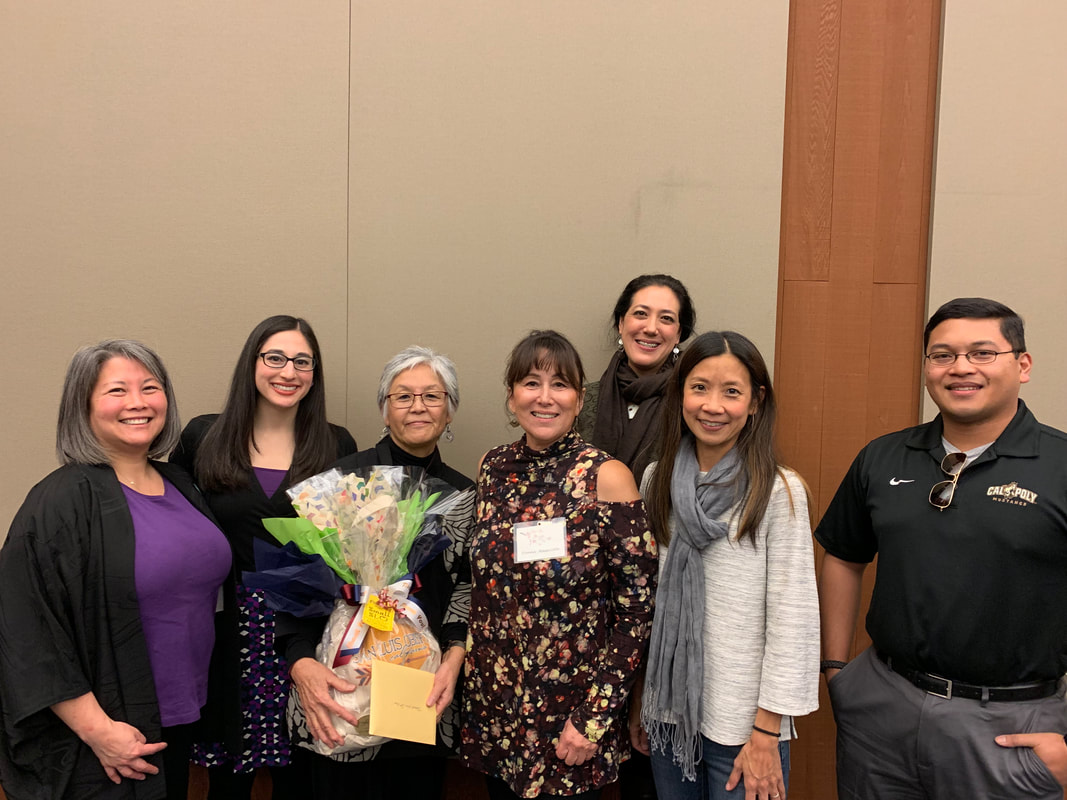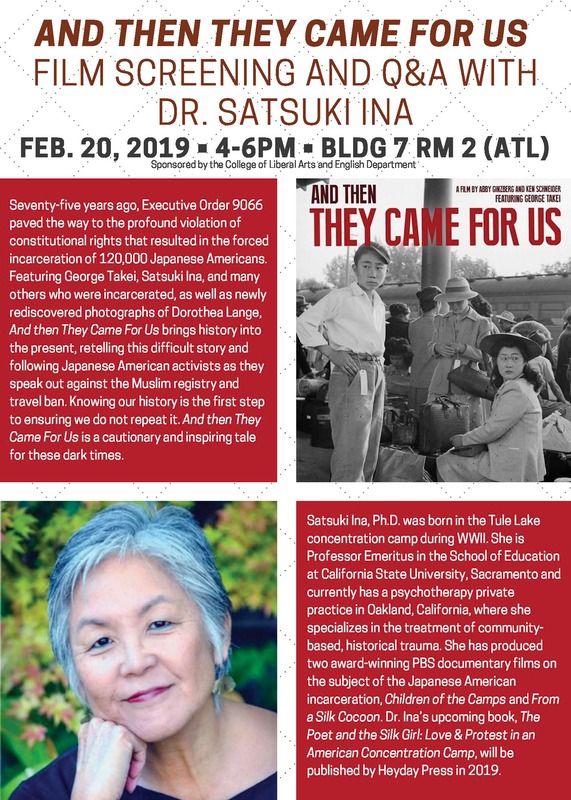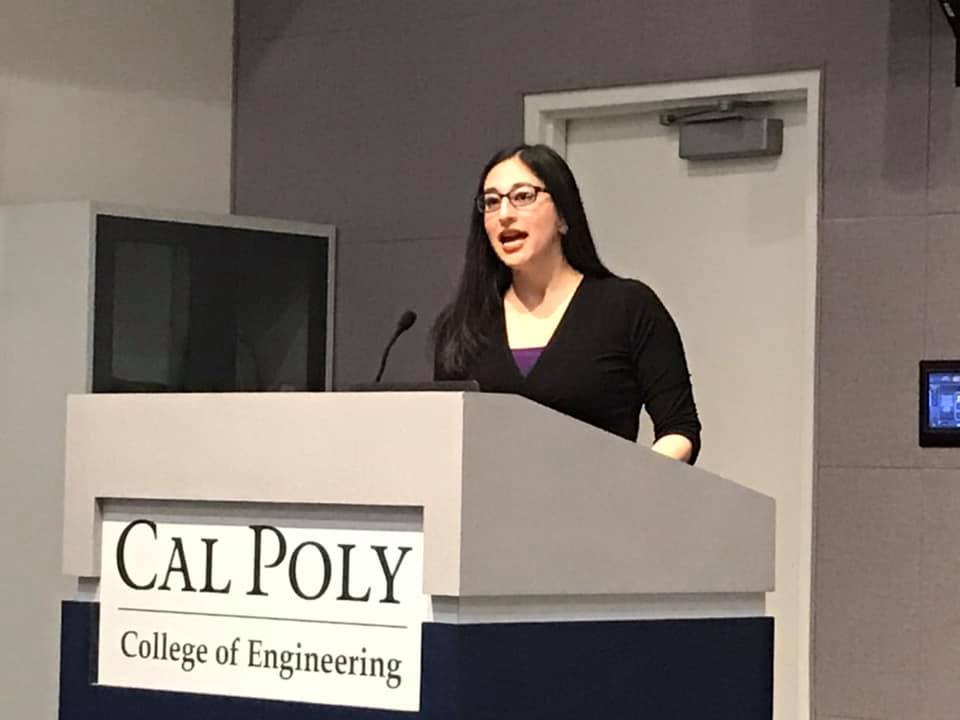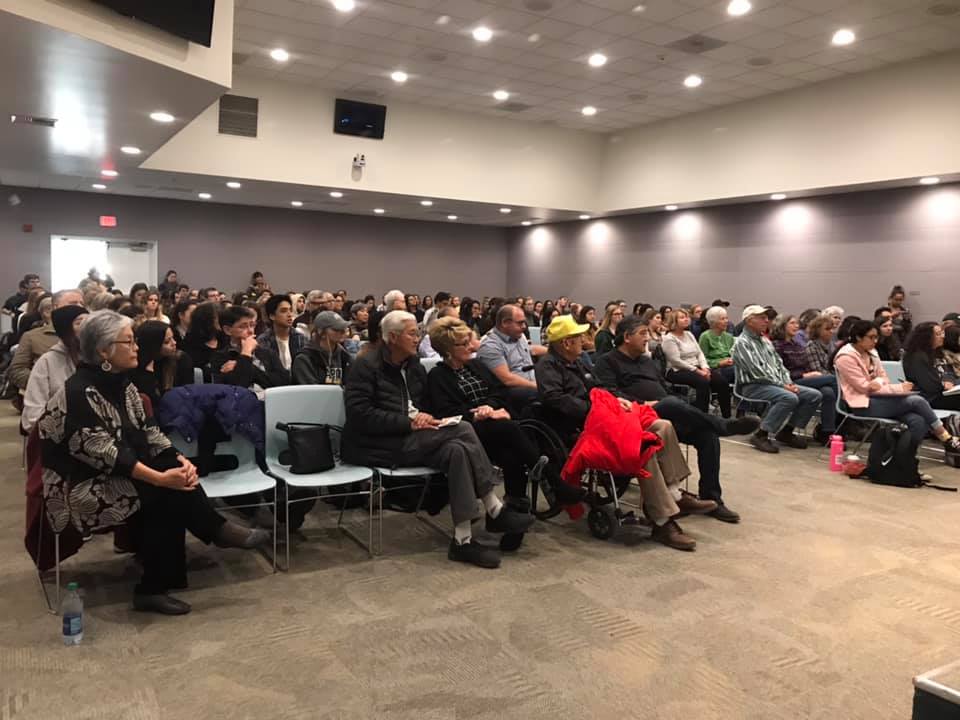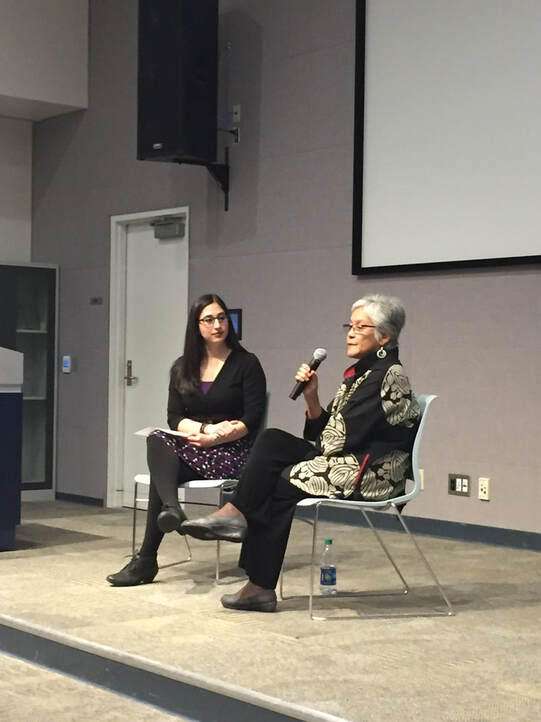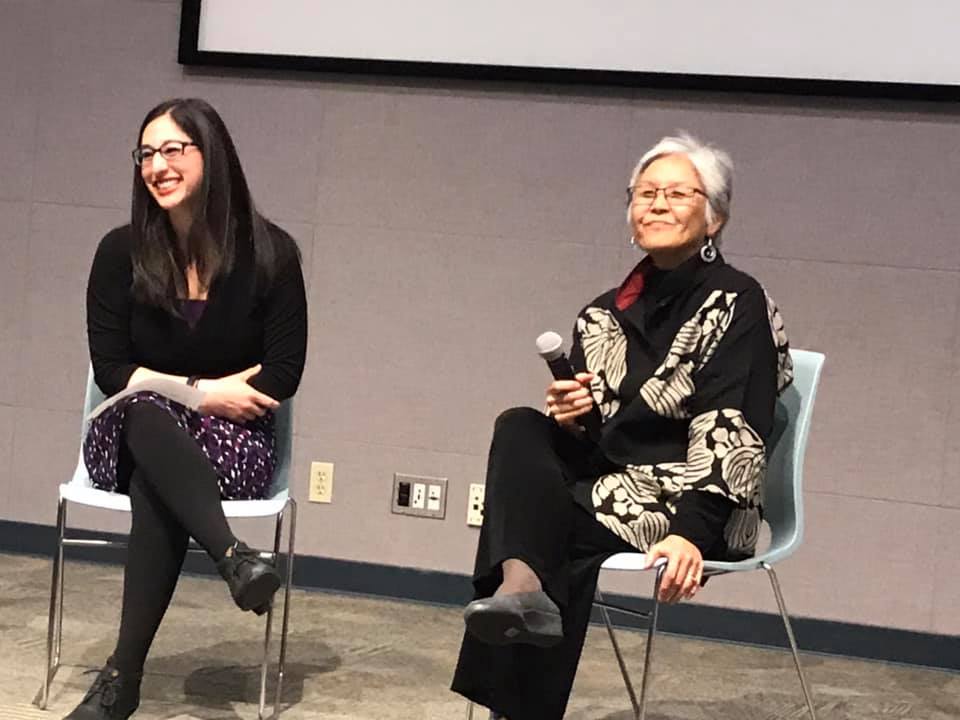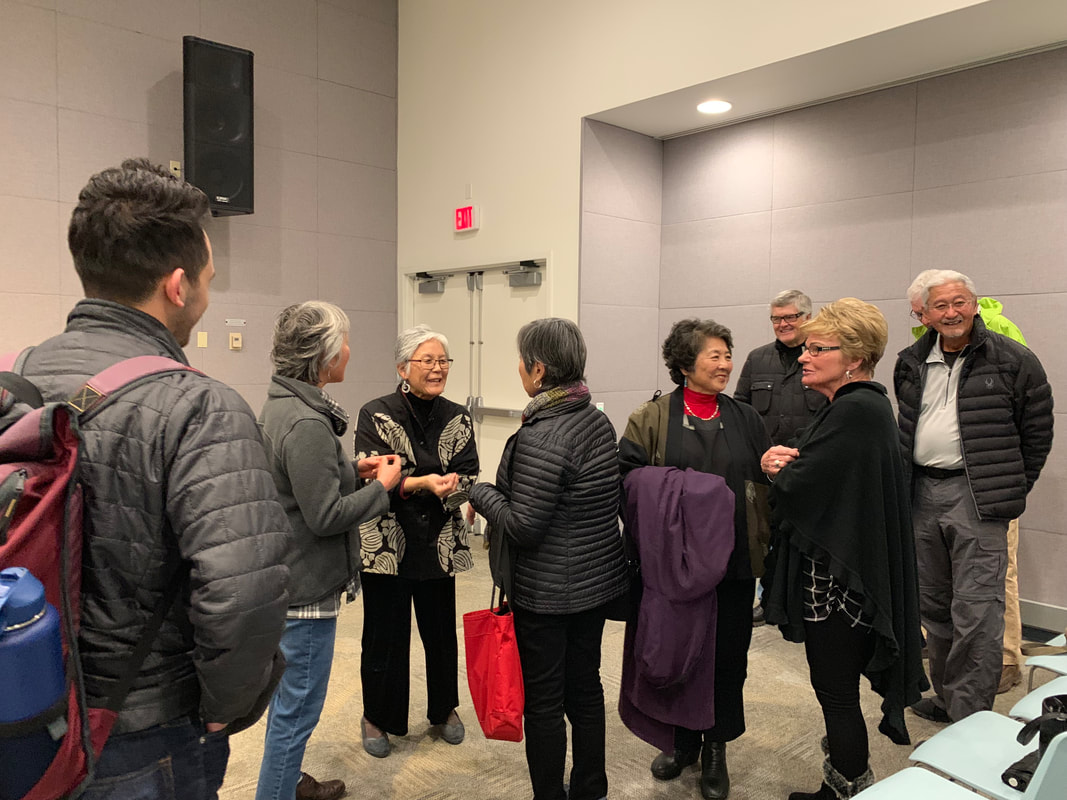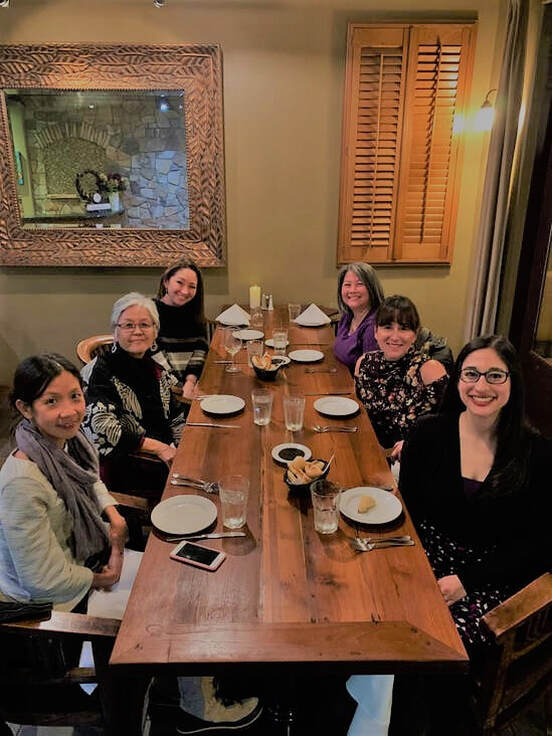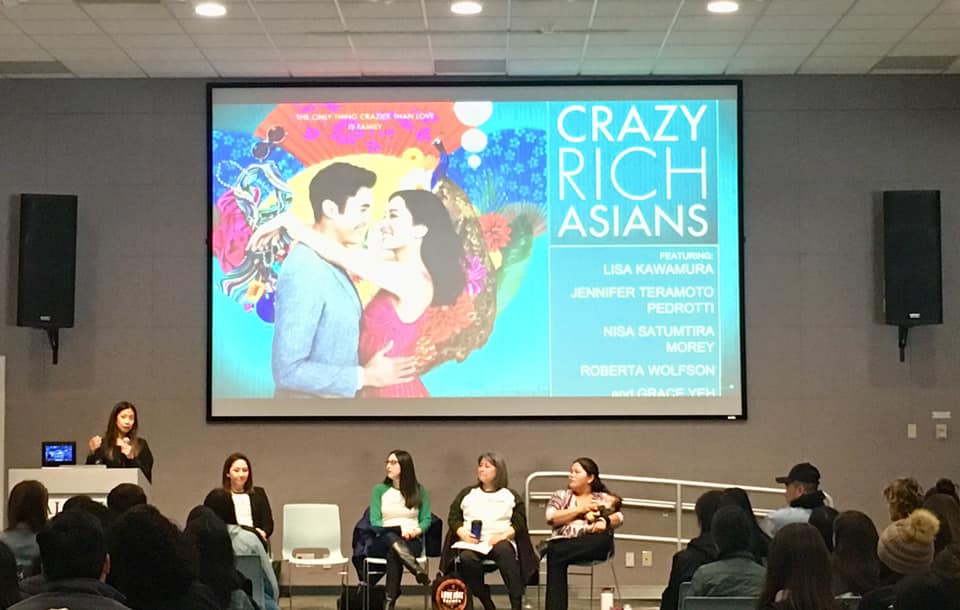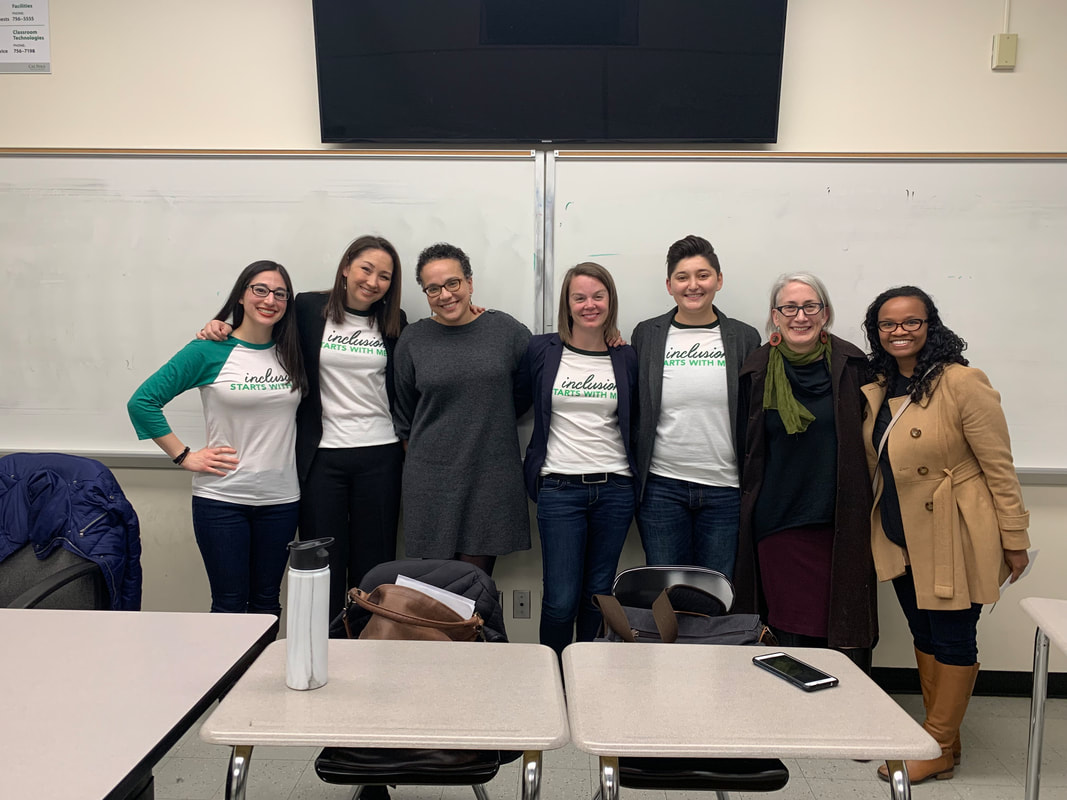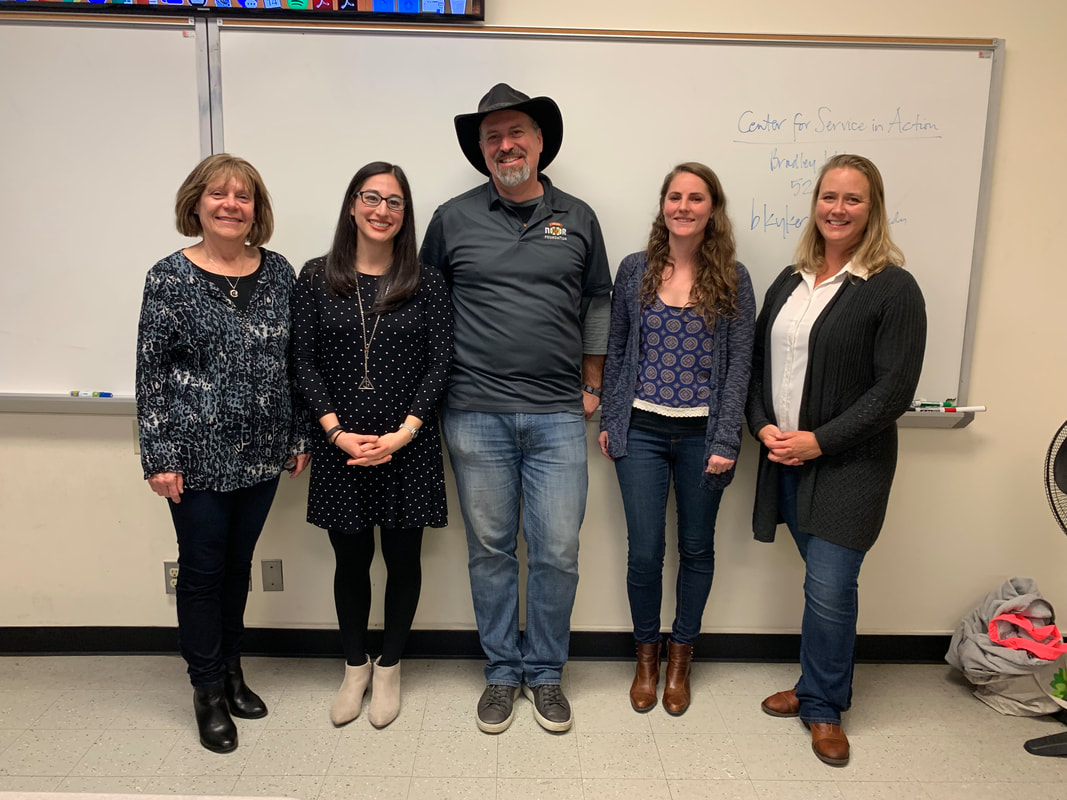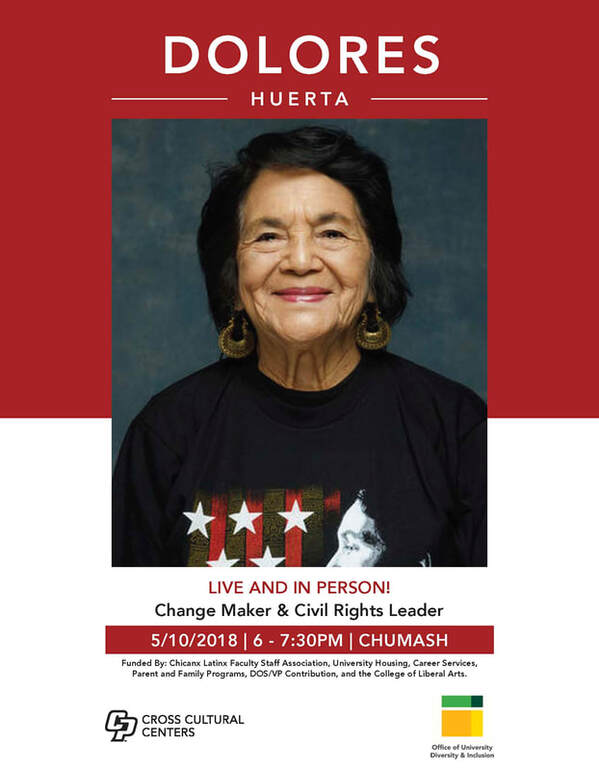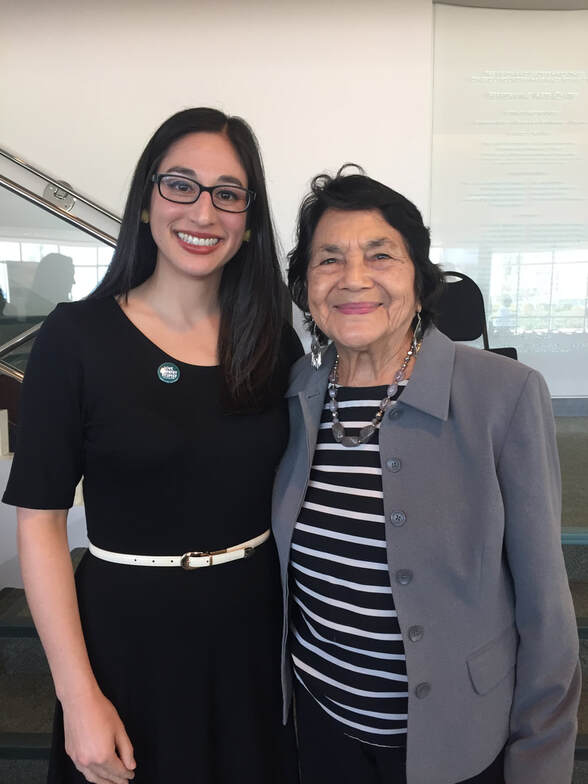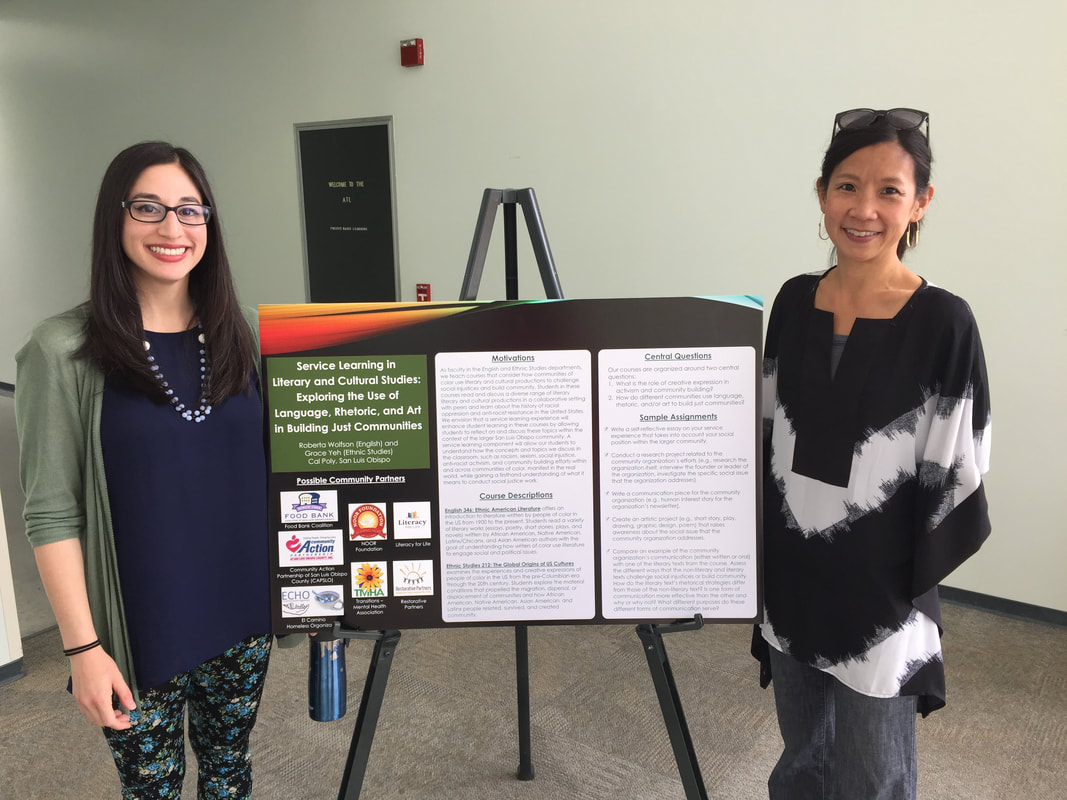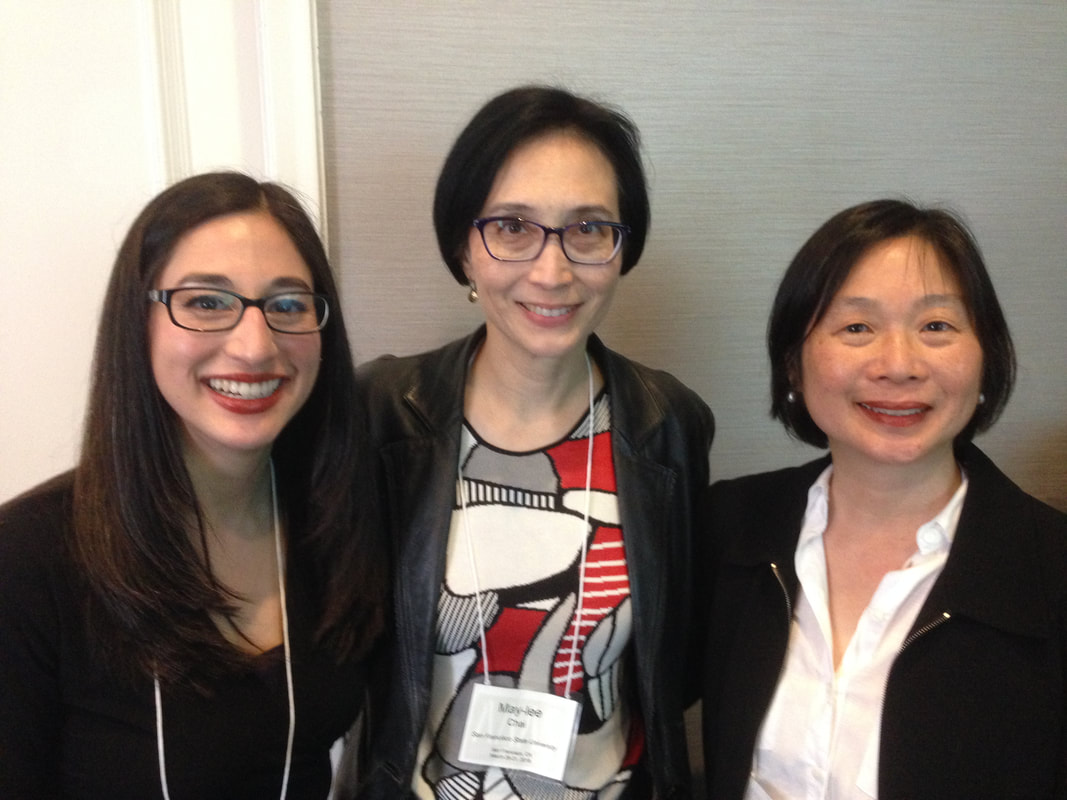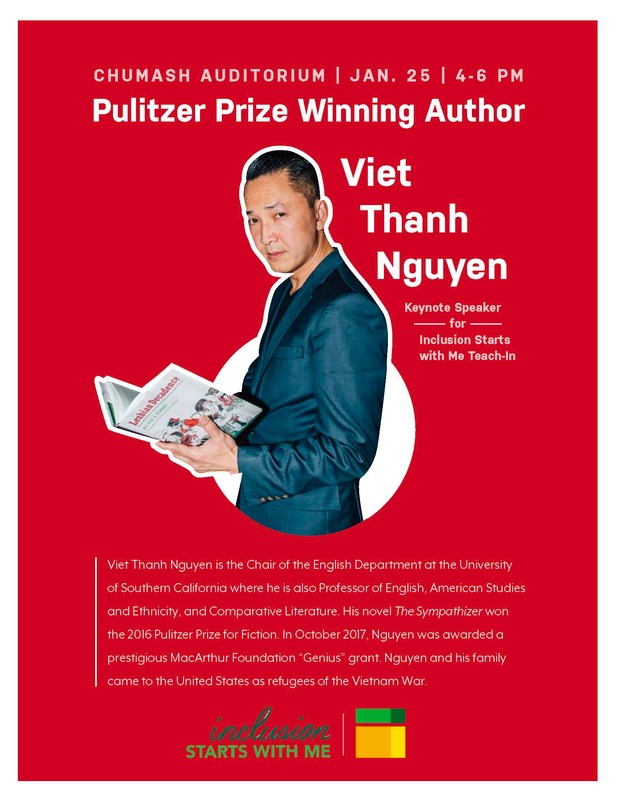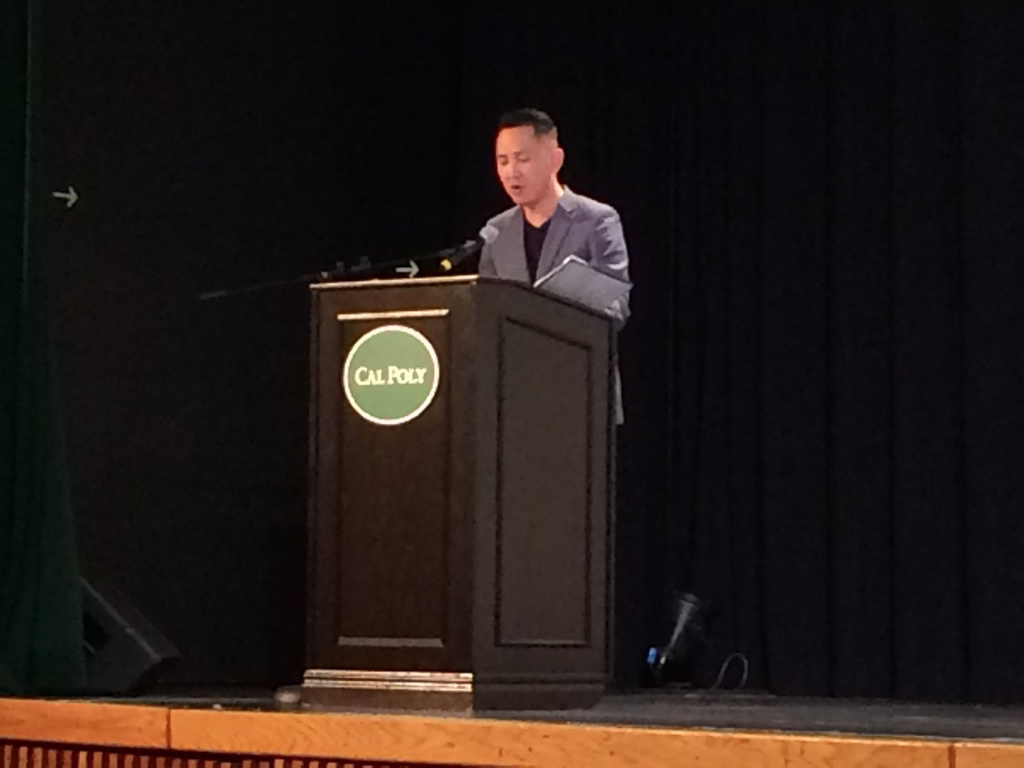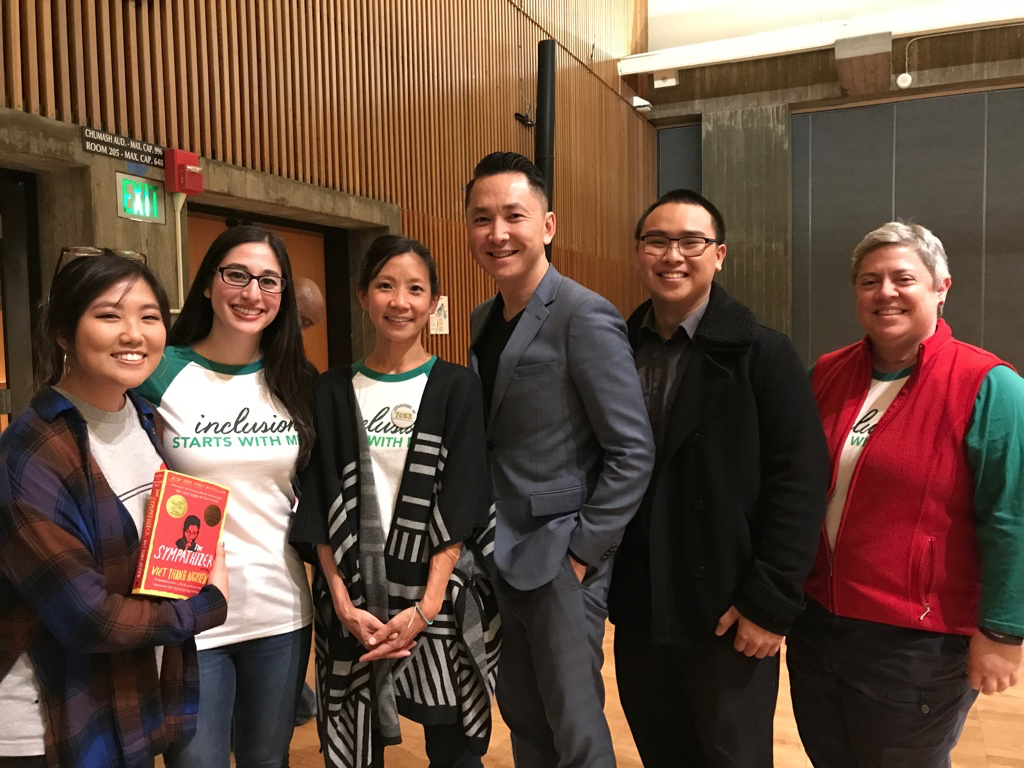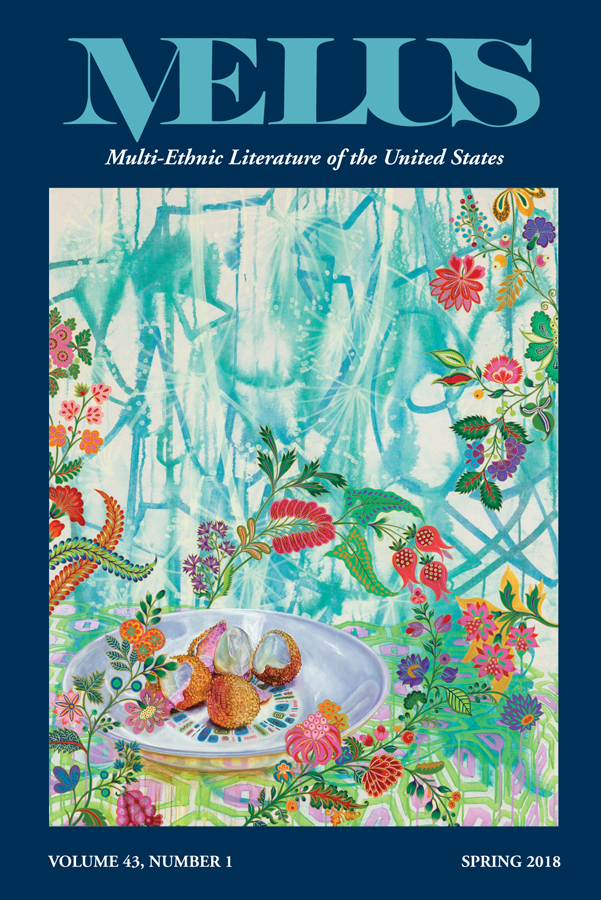|
I am thrilled to announce that this week I began a new appointment as a Career-Track Lecturer in the Program in Writing and Rhetoric at Stanford University. I am grateful to be joining such an intellectually dynamic program with an inspiring mission to support the development of all Stanford undergraduate students into ethically minded and critically thoughtful writers and speakers. I'm especially excited about the course I'll be teaching during the 2020-21 academic year, Writing for Liberation: The Rhetoric of Antiracism. The most recent edition of the Program in Writing and Rhetoric's newsletter announces my addition to the program along with an incredible cohort of seven other Career-Track Lecturers. Check it out to read more!
0 Comments
Yesterday I participated in Cal Poly's 4th annual Inclusion Starts With Me Teach In, which is a day full of workshops, panels, and events related to diversity, inclusion, and social justice. Since coming to Cal Poly, I have participated in this event every year. (You can read about my experiences at the 3rd annual Teach In here and the 2nd annual Teach In here.) I served on a panel called "Perspectives from Cal Poly's Multiracial Community," which brought together members of the Cal Poly community who identify as multiracial or multiethnic. I was joined by Dr. Jennifer Teramoto Pedrotti (Associate Dean for Diversity and Curriculum in the College of Liberal Arts), Kari Mansager (Director of Diversity, Inclusion, and Outreach at University Housing), Alyiah Gonzales (English student), and Ashley Calloway (biochemistry student). We enjoyed a robust conversation that covered a variety of topics, such as how our racial identities shift depending on time, space, and context; what assumptions people often make about our racial identities; how our family impacts the development of our multiracial identities; and what resources we have used to help with the development of our multiracial identities. Update on 2/21/20: I'm delighted to share that our panel was featured in a Cal Poly News Report article about the Teach-In, which includes a quotation from me about the event.
For the past three weeks, I have had a severe case of laryngitis and have conducted all of my professional responsibilities, including teaching, holding office hours, and participating in meetings, in silence. This challenge has been deeply humbling and has made me highly aware of how much I depend on my voice. I thought I would take a moment to write about my endeavors over the past few weeks, particularly the experience of teaching in person without a voice. I developed a sore throat and cough on January 13th that led me to lose my voice for three weeks due to severe inflammation of the vocal cords. During my recovery, it was necessary for me to modify my teaching strategies so that I could still deliver my curriculum. During the week of January 20th, I canceled my classes and asked my students to participate in an online peer review activity, which involved giving and receiving feedback on their first paper drafts. When my voice had still not returned the following week, I knew I had to figure out a new way to hold classes. Starting the week of January 27th, I returned physically to the classroom and used a mixture of strategies to lead class without speaking. I'm pleased to share that these modifications were successful, and I have been able to keep my class on schedule, with no significant reduction to the material. Here is a brief catalogue of the techniques I used. Prepared Messages on PowerPoint Slides Before class, I decided on the key instructions and prompts I wanted to convey during class time and presented them in large text on PowerPoint slides. I used these PowerPoint messages to inform my students about the day's agenda, to explain instructions before new activities, and to provide transitions from one activity to the next. Here is the first slide from the PowerPoint I used on January 27th. Clapping
To get the attention of my students when they were engrossed in small group discussion, I would clap three times. When they heard me clap, they would clap three times in response. We would continue this back-and-forth until everyone was clapping and had quieted down, and then we would be able to resume as a large group. This strategy was highly effective in enabling me to get my students' attention and keep us on schedule as we moved from one activity to the next. Online Lectures and Videos During a typical class meeting, I usually spend some time providing a mini-lecture that offers historical context about a course text or explains some theoretical concepts to my students. Instead of delivering these lectures out loud, I posted written lectures on our course website. During class time, I asked students (through written directions on the PowerPoint) to access this written lecture material and read silently to themselves. Students could access the course website from a technological device (such as a smart phone, tablet, or laptop). If they did not have a device in class with them, they could pair up with a classmate to read together. My written lectures included text, images, and videos, so students could receive the information in a few different modalities. Typing on Empty Slides during Q&A and Discussion Whenever my students finished reviewing online lecture material, I displayed a blank PowerPoint slide on the projector and asked them if they had any questions. As students raised their hands and asked for clarification on specific concepts that had been introduced in the lecture material, I typed out my answers in a large font size so that the words were visible to all students. Although the pace of conversation was slower because I needed to type out all of my responses, we were still able to get through many robust Q&A sessions this way. Small Group Work At various moments during the class, I asked students to participate in a group activity or converse in small groups to explore a specific concept. I was able to indirectly lead discussion by preparing questions and prompts for my students to discuss in small groups. This allowed the students to take ownership over their learning by close reading passages together and collaboratively deepening their understanding of key concepts. As students discussed, they typed out their answers in a shared Google document, which we later reviewed as a large class while group representatives explained their answers and ideas. While I still much prefer to vocalize my ideas rather than type them out, the experience of teaching without a voice was challenging but thrilling. Many of my students told me that they really appreciated my efforts to provide quality instruction despite my laryngitis. I am pleased that I was able to conduct class effectively despite the new challenges I faced and that my students were able to stay engaged in learning. I feel affirmed that I am innovative and flexible as an educator and am capable of teaching under rather unusual circumstances. Yesterday I entered the classroom with a voice, though not fully healed, for the first time in weeks, and it was an incredible feeling to be greeted by my students with cheers and applause and to be able to converse with them once again. I'm very grateful to them for showing me so much patience over the last few weeks and to have had this unusual experience, which taught me a lot about my own pedagogical abilities and about my students' deep commitment to learning. Last week I attended the 2020 Modern Language Association Convention in Seattle, WA, which took place from January 9-12, 2020. The presidential theme was "Being Human," and scholars, educators, and activists from all over the world came together to reflect on the role of language and literature in defining what it means to be human. I presented on two panels. The first panel, which was entitled "Alternative Genealogies of the Speculative" and arranged by the Genre Studies Forum for Speculative Fiction, questioned U.S.- and Eurocentric frameworks of speculative fiction by considering the role of the speculative genre in non-U.S. and non-Western contexts. My paper, "Speculative Reimaginings of the Global Refugee Crisis in Mohsin Hamid's Exit West," explored how the Pakistani Muslim writer Mohsin Hamid uses cognitive estrangement in his most recent novel Exit West to disrupt white supremacist, Eurocentric, and neo-colonial forms of violence enacted on the Global South by the Global North. The second panel I presented on, which was a special session entitled "Being Human in Contemporary Arab Writing," considered how contemporary Arab literature complicates the question of the human and post-human due to diaspora, postcolonial migration, civil wars, and regional border crossings. My paper, "(Mis)Reading the Arab Body as (Non)Human in Laila Halaby's Once in a Promised Land," explored how Halaby's novel critiques the post-9/11 U.S. security state’s misinformed practices of reading the racialized Arab body as non- or subhuman and offers an alternative model for reading Arabs that asserts their humanity. In addition to presenting on these two panels, I had a great time reuniting with old friends from my graduate program, engaging in stimulating conversation with other scholars, and exploring the dynamic city of Seattle.
This past week I attended the 2019 American Studies Association Convention in Honolulu, HI, where I had a wonderful time engaging in stimulating conversation with other scholars, activists, and educators. The theme of the conference was "Build As We Fight," and all of the panels, roundtables, and talks were focused on thinking about how we scholars and educators might resist the oppressive and genocidal effects of white supremacy and create alternative means of survival and community building. Along with Nicole Dib, a Ph.D. candidate at the University of California, Santa Barbara (UCSB), I helped organize a panel entitled "Imagining the Future of Resistance: Speculative Fiction and the Aesthetics of Social Transformation." This panel turned a critical lens toward speculative fiction to ask how activist writers of color use this genre to challenge the violence of a U.S. state that routinely attempts to erase native communities, exacerbate climate change, and exclude immigrants from civic belonging. In her paper, Nicole explored how two contemporary Native American authors, Louise Erdrich and Rebecca Roanhorse, build new ways of imagining community in speculative fiction novels that feature characters on the run from world-ending catastrophes. In my paper, entitled "Imagining the Dystopian Future of U.S. Immigration in Sabrina Vourvoulias’ Ink," I considered how Sabrina Vourvoulias' speculative fiction novel Ink warns about the current path of U.S. immigration policy and raise questions about the economic, social, political, and spiritual costs of allowing xenophobic sentiment and practices to continue to escalate in this nation. Our third panelist, Elizabeth Callaway, an assistant professor of English at the University of Utah, took our discussion beyond the world as we know it by discussing how an Afrofuturist novel set in an alternate universe, N. K. Jemisin's The Fifth Season, models climate change and urges new engagements with environmental crisis. Chairing and commenting on these individual papers was Ruth Hsu, a professor at the University of Hawai'i at Manoa who specializes in Asian American and African American literary and cultural studies and whose research examines the intersection of nation, gender, and ethnicity. Here is a picture of the entire panel posing after our session. In addition to presenting on this panel and listening to other talks, I was delighted to attend the launch party for the recently published edited collection Antiracism Inc.: Why the Way We Talk about Racial Justice Matters (2019, co-edited by Felice Blake, Paula Ioanide, and Alison Reed). I am especially excited about the publication of this collection, as I helped organize many of the conferences and conversations that gave rise to this publication when I served as a Graduate Fellow for the "Antiracism Inc." program (2013-2016) sponsored by UCSB's American Cultures and Global Contexts Center under the direction of Felice Blake, one of my dissertation advisors. This launch party was truly an occasion of fellowship and celebration. Here is a picture of Felice and me posing together with a copy of the book.
I am delighted to share that my latest research article, "Race Leaders, Race Traitors, and the Necropolitics of Black Exceptionalism in Paul Beatty's Fiction," was published today in the scholarly journal American Literature (volume 91, issue 3). This article was published as part of a special topic issue on "The Plantation, the Postplantation, and the Afterlives of Slavery," which was guest edited by Gwen Bergner (Associate Professor, West Virginia University) and Zita Cristina Nunes (Associate Professor, University of Maryland). You can read the abstract and download the full article with institutional access here.
Cal Poly's College of Liberal Arts released its annual Impact magazine this week, featuring a story about the college's first diversity cluster search titled "Leaders in Diversity and Inclusion." This search was conducted in 2017 to hire new faculty across multiple departments who are committed to fostering diversity and inclusion in their teaching, research, and service. As one of the seven assistant professors hired as a result of this search, I am featured in the article. You can check out the article by visiting the college's website or downloading it as a PDF. Happy reading!
Yesterday marked the end of another academic year at Cal Poly with a successful weekend of commencement activities. I enjoyed participating in several events to celebrate our graduating seniors. The first event was the College of Liberal Arts Student Awards Reception on the afternoon of Friday, June 14th, where one of my students, Natalie Truong, was named the Outstanding Graduating Senior in English. Since Natalie had identified me as a faculty member who made a significant impact on her academic experience at Cal Poly, I was invited to accompany her on stage as she received her award. Natalie has taken two of my classes over the past two years and completed her senior project under my supervision. In the fall, she will begin law school at UC Davis. I am so proud of her, and I know that she has a bright future ahead! Below are some pictures from the ceremony. The second event that I participated in was the Asian Pacific Islander Commencement, a ceremony to honor our graduating API students, which took place on the evening of Friday, June 14th. I was joined by other members of the Asian Pacific Islander Faculty and Staff Association (APIFSA) to support these students. The last event I participated in was the English Department's commencement ceremony, which took place on Sunday, June 16th. This was a bitter sweet ceremony, as it marked the last time I would see many of my graduating senior English students. As I said goodbye to my students, many of whom are going on to begin incredible careers and enroll in top-tier graduate programs, I was reminded of how much I value being an educator and having the opportunity to work so closely with the next generation of young minds. Here are a few pictures from the ceremony. This 2018-19 academic year, I have been serving as one of 22 faculty mentors in the BEACoN (Believe, Educate & Empower, Advocate, Collaborate, Nurture) Research and Mentorship Program, which pairs students from underrepresented backgrounds with faculty researchers to conduct research in their field of interest. The goal of this program is to teach underrepresented students about the process of conducting research while also giving faculty critical support to achieve their research goals.
In Fall 2018, I selected Mustafa Siddiqui, a second-year student in the comparative ethnic studies major, out of a competitive applicant pool to be my student research assistant. Throughout the winter and spring quarters, Mustafa has provided me with invaluable research support as I worked on several writing projects, including an article for an academic journal, a conference paper, and my current book manuscript. Mustafa has helped me by conducting literature searches to find relevant sources, reading selected sources and compiling annotated bibliographies, and reviewing drafts of my writing. Yesterday Mustafa and I attended the annual BEACoN Research Symposium, where we presented a poster summarizing our research. This event provided us with the opportunity not only to share our research, but also to learn about the many other exciting and inspiring projects being conducted by other faculty-student research pairs across campus. I was impressed to see that these projects reflect cutting-edge research from a variety of different disciplines, including architecture, biological sciences, civil and environmental engineering, communication studies, English, ethnic studies, industry management, history, kinesiology and public health, landscape architecture, marketing, physics, psychology and child development, education, and social sciences. I feel grateful to be a part of this inspiring community of faculty and student researchers. I just got back from the 2019 Association for Asian American Studies Convention (AAAS) in Madison, WI, where I had an incredible time engaging in stimulating conversation with other scholars and activists. I organized a panel titled "The Mixed Race Asian American Literary Imagination" sponsored by the Circle for Asian American Literary Studies (CAALS). Here is a poster announcing the two panels sponsored by CAALS this year: In my paper titled "Passing Away and Racial Passing in Celeste Ng's Everything I Never Told You," I considered how Ng's novel employs the trope of the tragic mulatta figure to establish the mixed race subject as a figure of ungovernability. I was joined on the panel by Sara Lee (English Ph.D. student at SUNY Binghamton University), who considered the representation of racial ambiguity in Chang-Rae Lee's Aloft; Elizabeth Moser (English Ph.D. student at George Washington University), who explored mixed race counter-histories in Viet Thanh Nguyen's The Sympathizer; and Heejoo Park (English Ph.D student at UC Riverside), who discussed the genre of the mixed race bildungsroman in Asian American and Latinx young adult fiction. Here is a picture of us after the panel. On my last day of the conference, I attended the section meeting for the Critical Mixed Race Studies caucus of the AAAS, where I met many other scholars engaged in Asian American critical mixed race studies. During this section meeting, we held leadership position elections, and I am excited to share that I was selected to be the next secretary of the CMRS-AAAS caucus, a position that I will hold until next year's AAAS conference in April 2020 in Washington, D.C. In my role as secretary, I will attend CMRS meetings and maintain records, as well as work with the newly appointed president Anna Storti to ensure that CMRS sponsors a couple panels at next year's AAAS conference. I am looking forward to taking on this new leadership position!
After months of planning and organizing, this week I hosted a day of programming commemorating Japanese American internment during World War II. Tuesday, February 19th marked the 77th anniversary of President Roosevelt's signing of Executive Order 9066, which authorized the forced incarceration of 120,000 people of Japanese ancestry. In honor of this Day of Remembrance, I organized a film screening of a 2017 film documentary about the internment experience, And Then They Came For Us (directed by Abby Ginzberg), on Wednesday, February 20th. I also invited to campus one of the people featured in the film, Dr. Satsuki Ina, who was born in the Tule Lake incarceration camp and is currently an activist and professor emeritus from California State University, Sacramento. The first event was a luncheon hosted by the Asian Pacific Islander Faculty and Staff Association (APIFSA), during which Satsuki gave a moving talk about intergenerational trauma caused by Japanese American internment, which was titled "Healing Community Trauma: Looking Beyond the Victim." As a former internee who was personally affected by internment and as a psychotherapist who specializes in the treatment of community-based historical trauma, Satsuki provided an expert perspective on this critical topic. Her talk, which took place as APIFSA members enjoyed delicious food catered by Oki Momo Asian Grill, inspired robust discussion during the Q&A session that followed. Here is a flyer of the event, followed by some photos taken during the event. The second event was a public film screening of the documentary film And Then They Came For Us, which attracted over 200 audience members. This film offers a moving account of Japanese American internment and brings the history of this egregious violation of civil liberties into the present day by making critical comparisons between the internment of Japanese Americans during World War II and the abuses of Muslim Americans during the War on Terror. After the film screening, I spoke with Satsuki about the film and its relevance for today's political climate. Then I opened up the conversation to the audience, several of whom were former internees and many of whom knew family or friends who had been incarcerated. During Q&A, Satsuki shared about her present-day activist efforts to protest the detention of migrant children at the border. The conversation was so rich that several people stayed to talk with Satsuki long after the official end of the event. Here is a flyer of the film screening, followed by some photos taken during the event. After a long day of programming, Satsuki and I headed to dinner with a few members of the APIFSA, where we enjoyed continuing the conversation over a delicious meal. Looking back over today's events, I can't help but feel inspired and moved. I am so grateful to have the support of the Cal Poly community, particularly the College of Liberal Arts, the English Department, the APIFSA, and the Kennedy Library, to put on programs that enrich our knowledge of the United States' racial history and that represent the experiences of underrepresented communities. I will never forget Satsuki's visit to our campus this week, which has helped stimulate important conversations within our community about the long history of violent detention in the United States and its continued legacy today.
Today I participated in three panels for Cal Poly's 3rd annual Inclusion Starts With Me Teach In, which is a day full of workshops, panels, and events related to diversity, inclusion, and social justice. After participating in the Teach In last year (you can click here to read about that experience), I was delighted to help support this program again this year. The first panel that I participated in was titled "The Social Construction of Race: Reflections from the Cal Poly Multiracial Community" and was co-organized by me and a colleague of mine, Maggie Bodemer, who is a lecturer in the history department. We were joined by Jennifer Teramoto Pedrotti (Associate Dean for Diversity & Curriculum in the College of Liberal Arts), Kari Mansager (Program Director of the Office of University Diversity and Inclusion), and Alyiah Gonzales (an English major and one of my students who also works in the Cross Cultural Centers). The panel was a huge success, prompting rich discussion about multiracial identity and the history of race as a socially constructed concept in the United States. I was happy to see that we attracted a large audience of several dozens of people. The second panel was titled "Crazy Rich Asians Discussion: Asian American Representation in Film and Popular culture" and organized by the leadership of the Asian Pacific Islander Faculty and Staff Association. I was joined on the panel by Jennifer Teramoto Pedrotti, Grace Yeh (Professor of Ethnic Studies), Lisa Kawamura (Lecturer of Communication Studies), and Nisa Morey (Lecturer of Chemistry). We filled the room with close to 200 audience members who were eager to talk about the representation of Asian Americans in Crazy Rich Asians. Below is a picture of us panelists in the middle of discussion. The last panel was titled "Cluster Hiring and Organizational Diversity: A Report from the First Year" and organized by Jennifer Teramoto Pedrotti. The panel brought together most of the faculty who were hired as part of the diversity cluster search put on by the College of Liberal Arts in 2017. I was joined on the panel by Farah Basel Al-Nakib (Assistant Professor of History), Jay Bettergarcia (Assistant Professor of Psychology and Child Development), Joan Meyers (Assistant Professor of Social Sciences), Emily Ryalls (Assistant Professor of Communication Studies), and Amber Williams (Assistant Professor of Psychology and Child Development). We had a great conversation about the success of cluster hiring and the sense of community we have formed as new assistant professors joining the Cal Poly community at the same time. This winter quarter at Cal Poly, I am teaching ENGL 346: Ethnic American Literature with a significant service-learning component. My students will partner with one of four local nonprofit organizations, the San Luis Obispo chapter of Literacy for Life, the El Camino Homeless Organization (ECHO), the Food Bank Coalition of San Luis Obispo County (SLO Food Bank), and the San Luis Obispo Noor Foundation, to create blog posts, newsletter articles, and other forms of written media that promote the important work that these organizations are doing in the community. The goal of this project is for students to engage in community work while applying rhetorical skills to promote social justice.
Today, representatives from each partner organization visited our class to talk about the services that these nonprofits provide. Students had an opportunity to ask questions and learn more about the various programs and efforts run by these organizations. After hearing from each representative, my students signed up to work with one of these organizations. By the end of class, all of my students were matched with the organization of their choice and excited to get started on their service-learning project. Below is a picture of me posing with the four representatives who visited our class. Yesterday I had the incredible honor of meeting Dolores Huerta, the legendary civil rights activist, labor organizer, and co-founder of the National Farmworkers Association (now the United Farm Workers). Dolores was visiting Cal Poly to give a talk about her experiences as an activist for over 50 years fighting for labor, civil, womxn, and LGBTQIA rights. The public talk took place in the evening, but I was fortunate enough to meet her before then at the President's Diversity Awards ceremony in the afternoon, which I had been invited to attend as a finalist for the President's Faculty Diversity Award. During this award ceremony, Dolores gave a few remarks about the importance of staying committed to promoting diversity on campus. It was inspiring to hear her speak during this award ceremony, as well as during her public talk later in the day, in which she emphasized the importance of organizing as a community in the fight against injustice. Below is a flyer advertising Dolores' talk and a photo of us together. I hope to emulate her fierce and loving spirit in all of my future endeavors!
In Fall 2017, I was awarded a fellowship sponsored by two Cal Poly organizations, the Center for Service in Action and the Center for Teaching, Learning, and Technology, to design and teach a service learning course during the 2018-19 school year. I teamed up with Grace Yeh, a professor in the Ethnic Studies department, to re-design two of our courses that are most similar in content, my Ethnic American Literature course and her Global Origins of U.S. Cultures course. Since then, we have been hard at work envisioning our service learning projects and reaching out to different non-profit organizations in the San Luis Obispo community to learn about their services and propose a possible partnership.
This morning the Center for Service in Action put on a showcase to celebrate our efforts. All of the faculty fellows were asked to create a poster describing the vision for our course re-designs that we could display during the showcase. I found this exercise extremely useful for helping me to identify and articulate the central goals of my course re-design. The showcase was a success, attracting many visitors and giving all of us fellows an opportunity to see how each other's course re-designs are coming along. I am getting excited to put this service learning course into action, which will happen in Winter 2019, when I am next scheduled to teach Ethnic American Literature. I just returned from the 2018 Association for Asian American Studies Convention in San Francisco, CA, where I had a very exciting experience. As I was presenting my paper, "'We Lacked Allies': Searching for Cross-Cultural Solidarity in May-lee Chai's Hapa Girl," I looked out into the audience and saw none other than the very author whose work I was presenting on, May-lee Chai herself! Her presence struck me as a gift, as it was incredibly humbling and exciting to meet and chat with the brilliant mind who created Hapa Girl.
After the panel was over, May-lee and I talked for quite a while; I was delighted to discover that she is not only intelligent and talented, but also warm and friendly. I know that we will continue to stay in touch, and I hope to invite her to Cal Poly to meet with my students when I teach one of her books in the future. Yesterday was a very exciting day at Cal Poly. All across campus, faculty, staff, and students participated in the 2nd annual Inclusion Starts With Me Teach In, which is a day of programming dedicated to topics related to diversity, inclusion, and social justice. The day's events culminated in a talk by the renowned author and scholar Viet Thanh Nguyen, who spoke about his Pulitzer Prize-winning debut novel, The Sympathizer (2015).
I contributed to the Teach In by co-facilitating a workshop on critical refugee studies with my colleague Maggie Bodemer, a lecturer in the history department who specializes in the history of Southeast Asia. We chose this topic to honor Nguyen’s presence on campus, since many of his recently published works explore the impact of the war in Vietnam on Southeast Asian refugee communities. The workshop was a great success, attracting several dozens of students and faculty and prompting robust discussion about the field of critical refugee studies, as well as the history and memory of the war in Vietnam. After facilitating this workshop, I had the incredible honor of meeting Nguyen during a small meet-and-greet with a few students and faculty members. I have long admired Nguyen’s work as one of the foremost scholars in the field of Asian American literary studies. I remember reading Nguyen’s first monograph, Race and Resistance: Literature and Politics in Asian America (2002), with great interest as a Ph.D. student. This past year, I was riveted as I read The Sympathizer, which recounts the history of the 1975 fall of Saigon and its aftermaths from the perspective of a communist spy in the South Vietnamese army. You can probably imagine how excited I was to meet the mastermind behind these great works in person! In anticipation of Nguyen's visit to our campus, I assigned the students in my Asian American literature course this quarter a couple of stories from Nguyen’s recently published short story collection, The Refugees (2017). My students were thrilled to learn that they would have the opportunity to meet the author of the stories they were reading this week. I am grateful that my students were able not only to read and discuss these wonderful literary works in my classroom, but also to hear directly from the author himself, who was able to enrich their understanding of the material by providing even more insights about his writings. Below is a flyer for Nguyen’s talk and some photos that were taken during the event. I am delighted to share that my latest research article, "Chicano Gang Members at Risk: Containment, Flight, and an Alternative Vision of Sociality in Luis J. Rodriguez's Always Running," was published today in the Spring 2018 issue of MELUS: Multi-Ethnic Literature of the United States (volume 43, issue 1). You can read the abstract and download the full article with institutional access here.
|
AboutCheck out this page for periodic updates about my research, teaching, and community work. |
